Emilia-Romagna: Ancient History, Slow Food, and Fast Cars
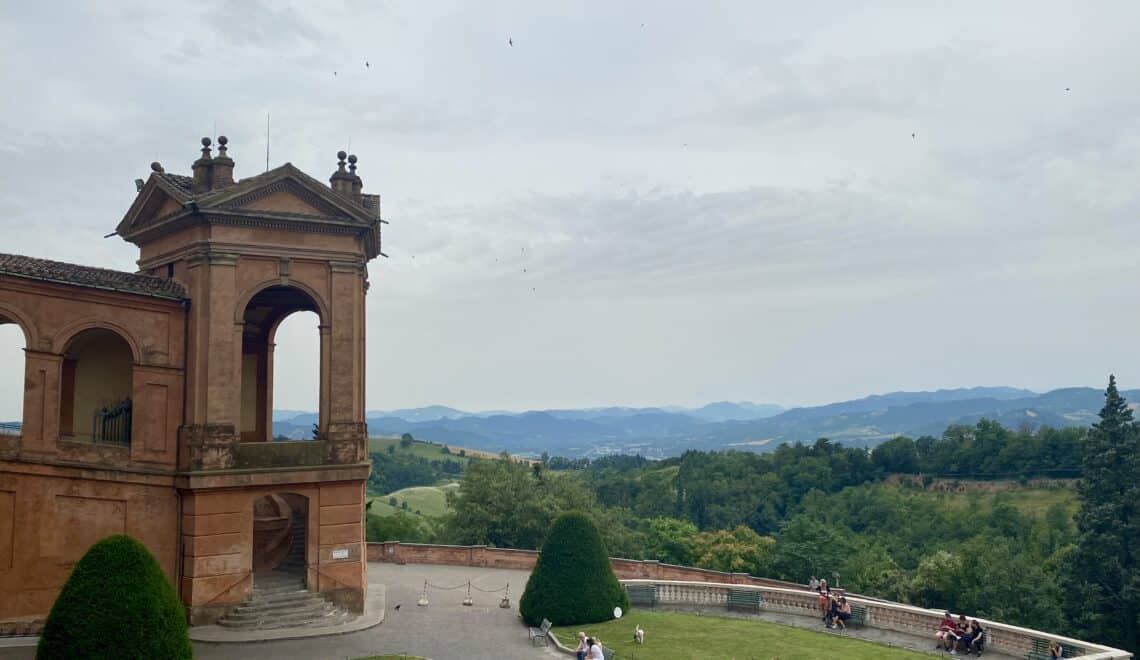
In Northern Italy, Emilia-Romagna stretches from the Apennine Mountains to the south and west, the Po River in the north, and the Adriatic Sea in the east. Its cities include Modena, Ferrara, and Ravenna, all rich with UNESCO World Heritage Sites. The region’s hip and lively capital, Bologna, is home to the world’s oldest university, the University of Bologna.
Emilia-Romagna is also home to such luxury car brands as Ferrari, Lamborghini, and Maserati. Oh yeah, and it is arguably the gastronomic capital of Italy. (Some even say the world!) So be sure to pack some pants with elastic waistbands.
Despite having so much to offer, Emilia-Romagna gets left off of many tourist itineraries and remains remarkably uncrowded.
*** Please note, this page contains affiliate links, meaning we may earn a very small commission if you book/apply through them (at no extra cost to you).
Table of Contents
Bologna
Bologna, the spirited capital of Emilia-Romagna, is a central transportation hub, and makes a great base from which to explore the region.
The city is nicknamed “La Rossa, La Dotta, La Grassa”, meaning the Red, the Learned, and the Fat. Red refers both to the red tint of the buildings, to the city’s history of leading the anti-fascist movement during World War II, and to its connection to progressive politics, even today. Learned refers to its historic and well-regarded university, and fat refers both to the city’s wealth and its outstanding cuisine.
One of Bologna’s most extraordinary features is visible everywhere in the city: the Porticoes of Bologna. Combined, they are a UNESCO World Heritage site. They comprise an incredible 24 miles of wood, stone, and brick-covered sidewalks within the city, originating around the year 1100. No city in the world has more porticoes. The grand column-lined walkways are each uniquely beautiful and artistic. They allow you to walk all over the city protected from the elements. Many of them have marble floors, giving one’s feet a much-needed rest from the lovely but difficult cobblestone streets in many European cities. It’s like walking through art exhibits between sites in Bologna.
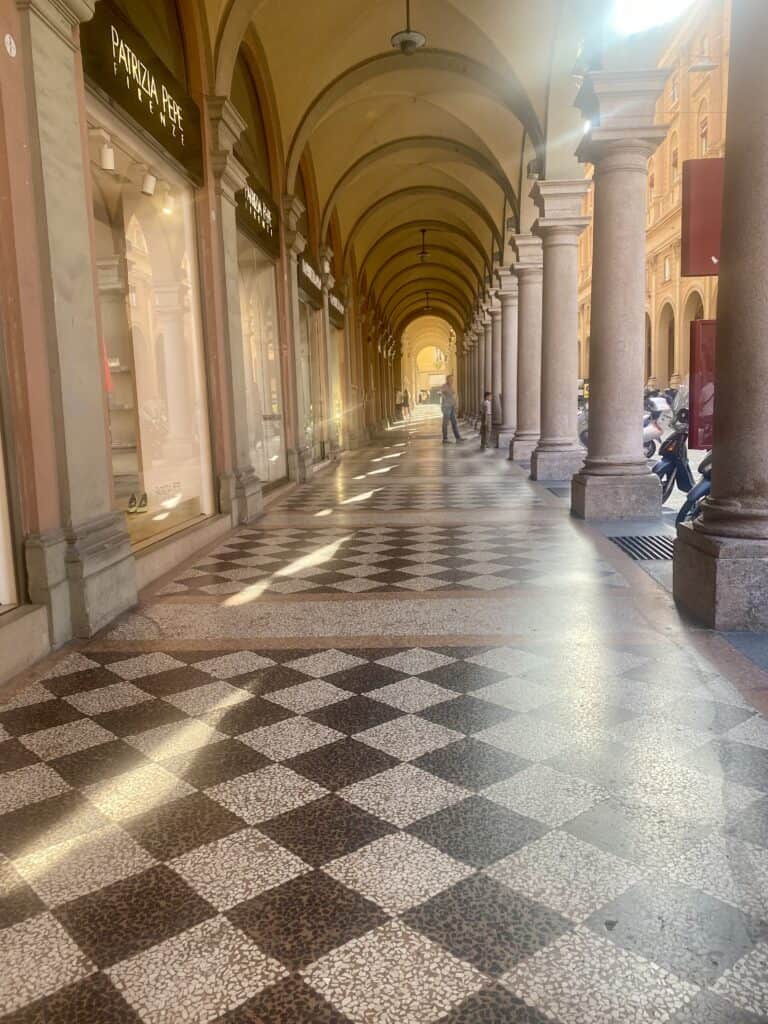
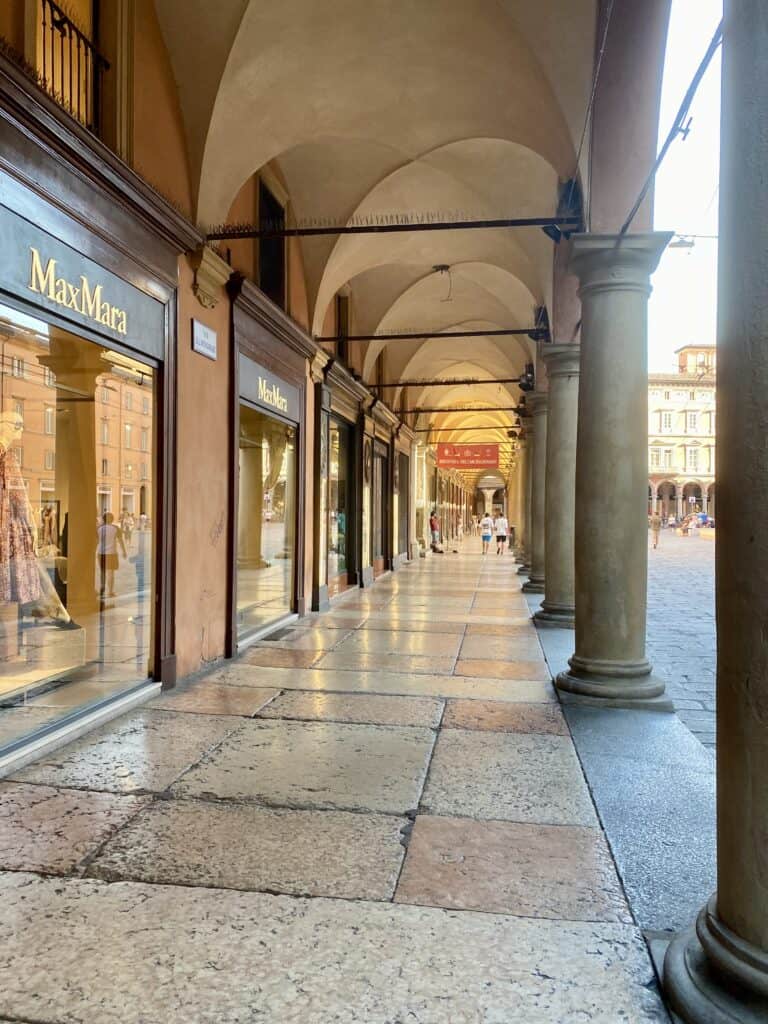
The heart of Bologna is the bustling Piazza Maggiore, surrounded by cafes, shops, and medieval buildings including Palazzo d’Accursio, which has been the seat of city government since the 14th-century.
The centerpiece of the Piazza is the Gothic Basilica di San Petroni (built over 3 centuries but never completely finished), named after the city’s patron saint. Visitors can enter (with no admission cost) during specific hours each day and view the Chapel of Three Kings, with its frescoes by Giovanni da Modena, as well as the music chapel containing an organ built in about 1470. It is the oldest functioning organ in the world.
The church also houses the largest sundial in the world, created by astronomer Gian Domenico Cassini in 1657. A 219-foot meridian line runs the length of the floor, and a small hole is located about 90 feet above, in the ceiling of the nave. Around mid-day, the sun shines through the hole, and a circle appears on the line, indicating the time of year and placement of the sun.

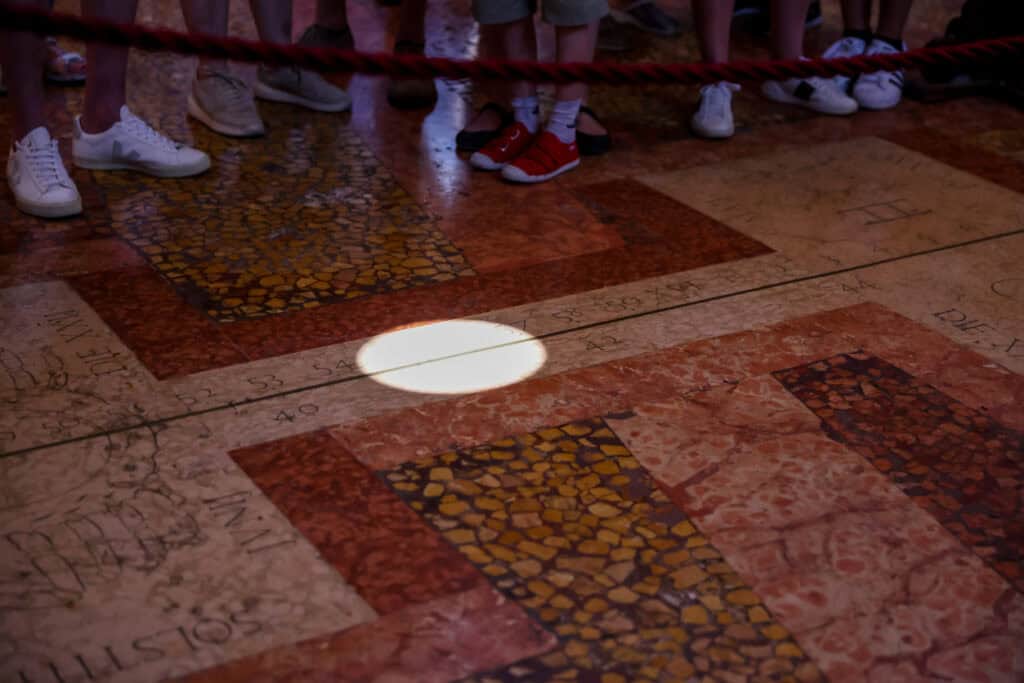
In the summer, the city sets up an enormous screen with hundreds of chairs in the middle of Piazza Maggiore. A different movie is shown every night in June and July. University students and other residents, young and old, flock to the piazza, giving it the feel of a festival each evening.
Adjacent to the Piazza Maggiore is Neptune’s Fountain, one of Bologna’s most iconic monuments. Commissioned to honor Pope Pius IV in the 16th century, the bronze and marble fountain was the work of Flemish sculptor Giambologna. It depicts Neptune, the Roman god of the sea, holding his trident in one hand and reaching out with the other, as if to calm the ocean. It was intended to represent the power of the pope, and his efforts to pacify the political unrest in the city at that time.
The trident in Neptune’s Statue so inspired five brothers named Carlo, Bindo, Mario, Ettore, and Ernesto that they used it as an emblem on a car they built in 1926. The brothers’ last name was Maserati, and the trident remains the logo of their car company today.
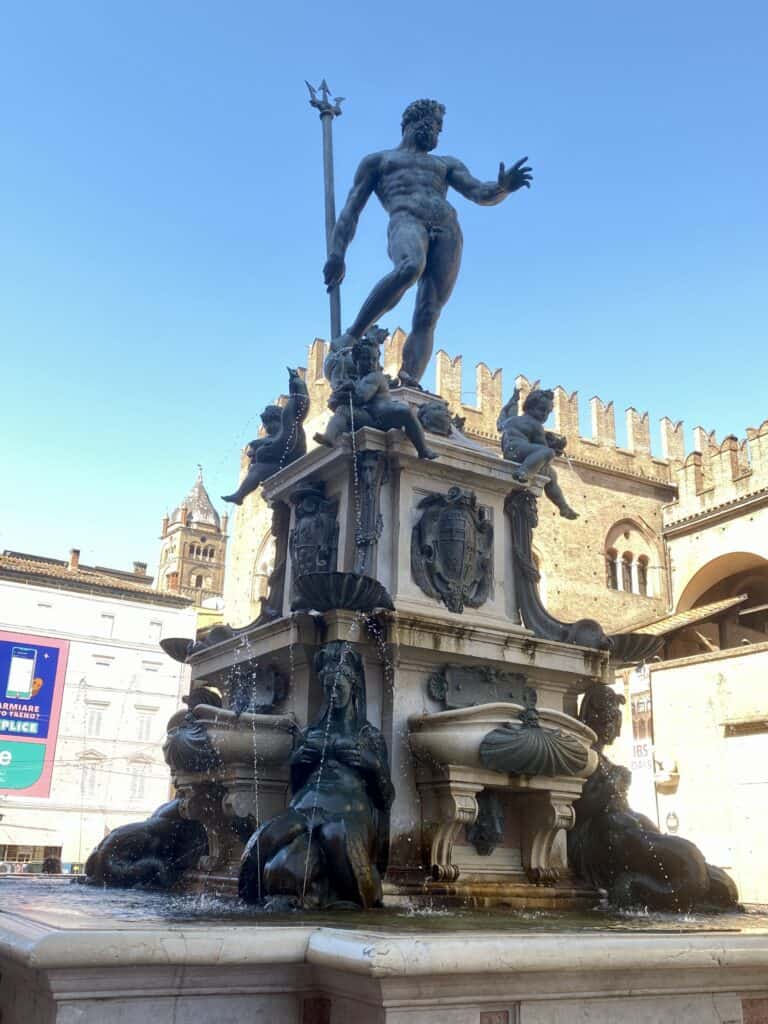
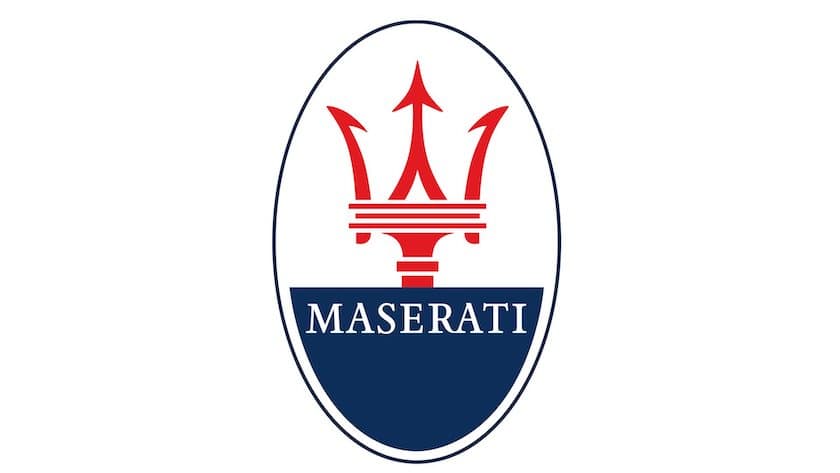
The University of Bologna, the oldest university in the world, is believed to date back to 1088 and is still thriving, with a student body of nearly 100,000. The spectacular Archiginnasio Palace was once the main building of the University, and now houses the largest public library in the region, as well as the Anatomical Theater. The wooden theater is intricately decorated with carvings and statues throughout, even on the ceiling, including two famous statues called “Spellati” (”Skinned men”). It was once a lecture hall for the University’s medical school, complete with an autopsy table.
If you’re up for a little exercise, walking The Portico di San Luca, the world’s longest uninterrupted series of porticoes, is an extraordinary experience. The walk, almost entirely covered, goes from central Bologna up to the Sanctuary of the Madonna of San Luca. The church sits prominently atop a hill overlooking Bologna on one side and the Apennine Mountains on the other.
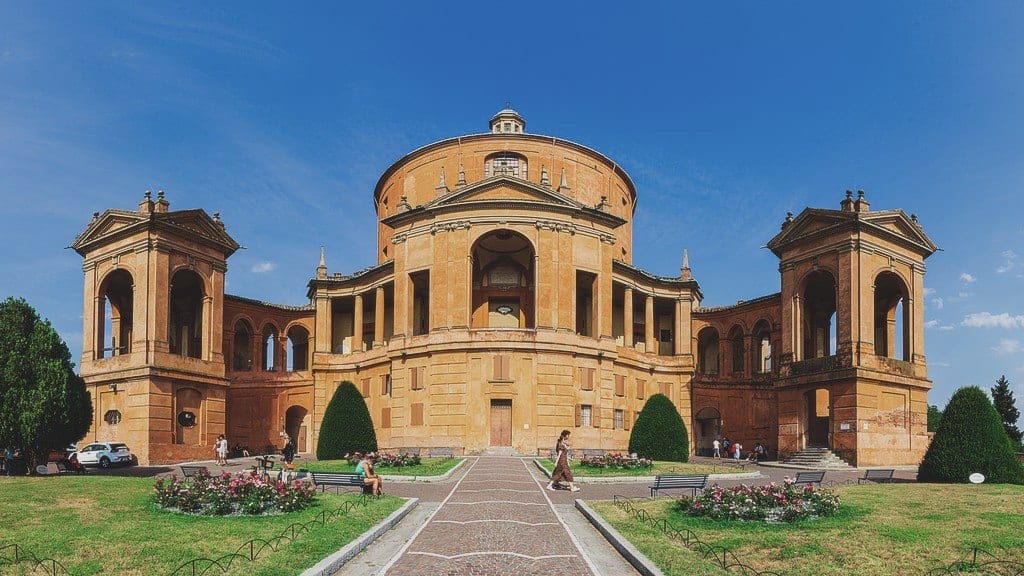
Legend has it that in the 15th century, it rained so much that the crops were being destroyed, and the local farmers asked the Virgin Mary for a miracle. The townspeople carried a holy icon (painted image) of her from the sanctuary down to Bologna’s Cathedral of San Pietro. The miracle was granted; the rain stopped. Since then, the procession has been repeated every year during the Feast of Ascension. The porticoes were built in the 17th and 18th centuries to protect the icon (which dates back to the 11th century), as well as the people in the procession.
The trail is about 2.5 miles, mostly uphill. There are lovely overlooks, with the city and the countryside in the distance. Along the way, there are pieces of art depicting The Mysteries of the Rosary, ending with the Crowning of Mary.
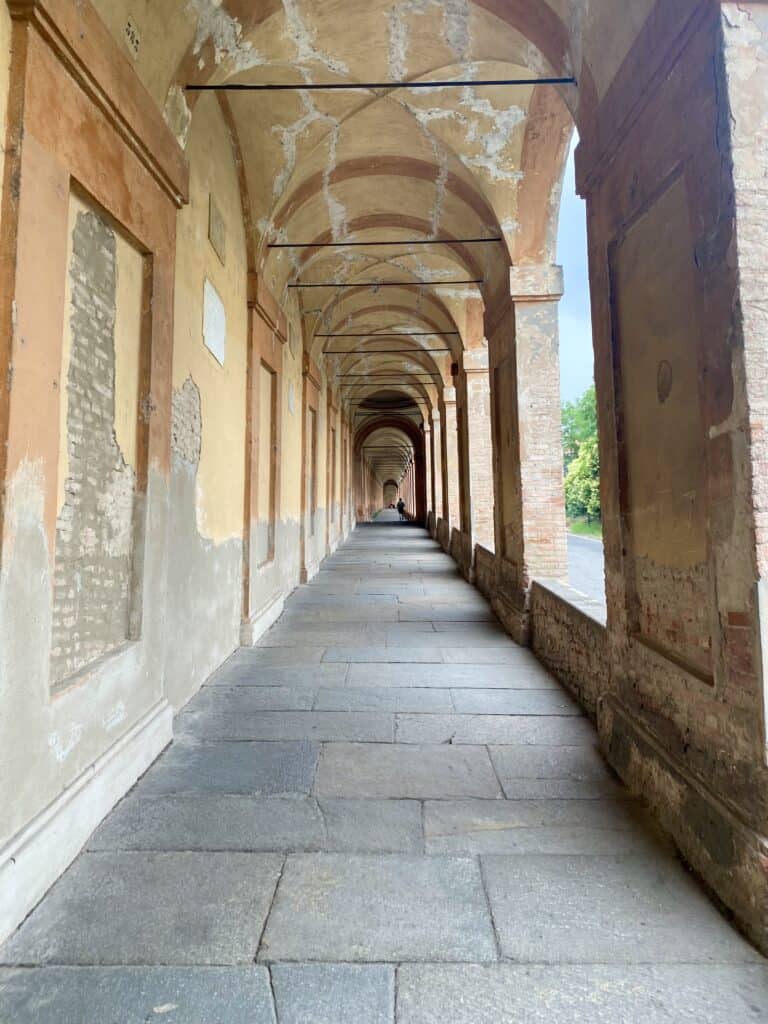
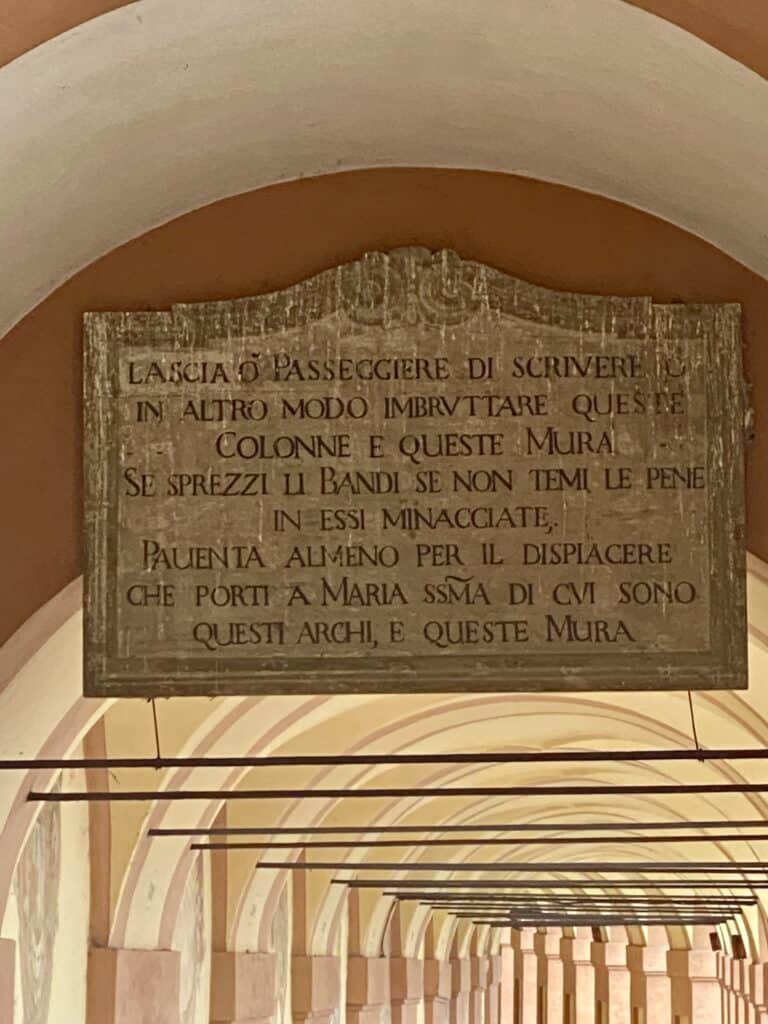
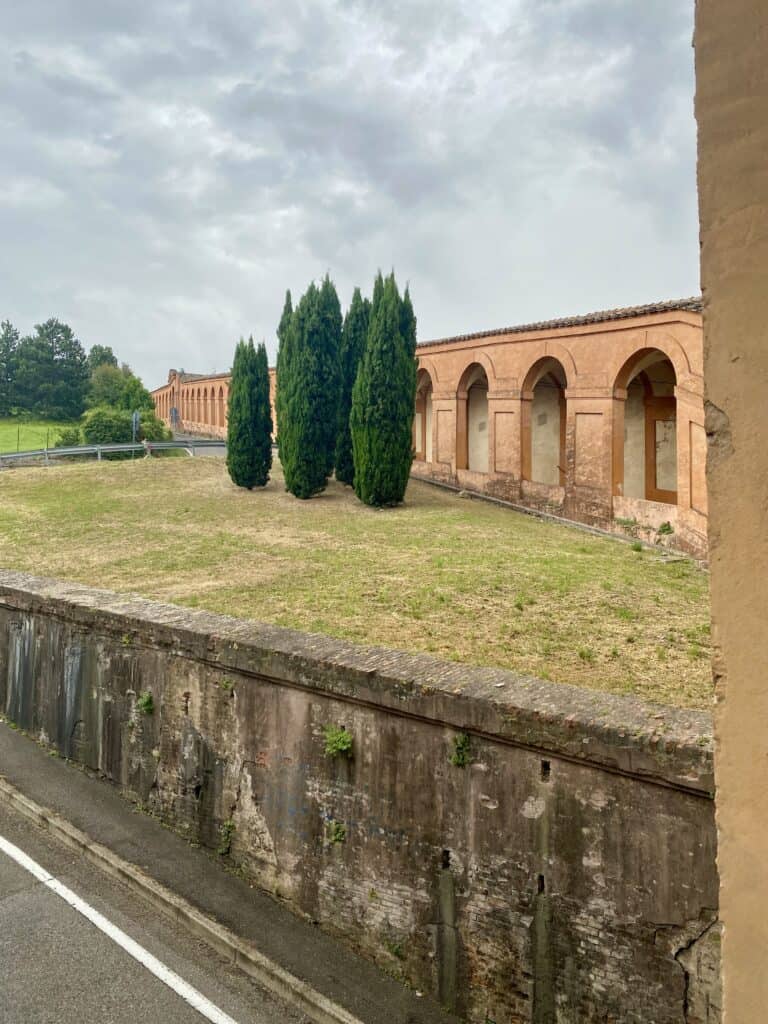
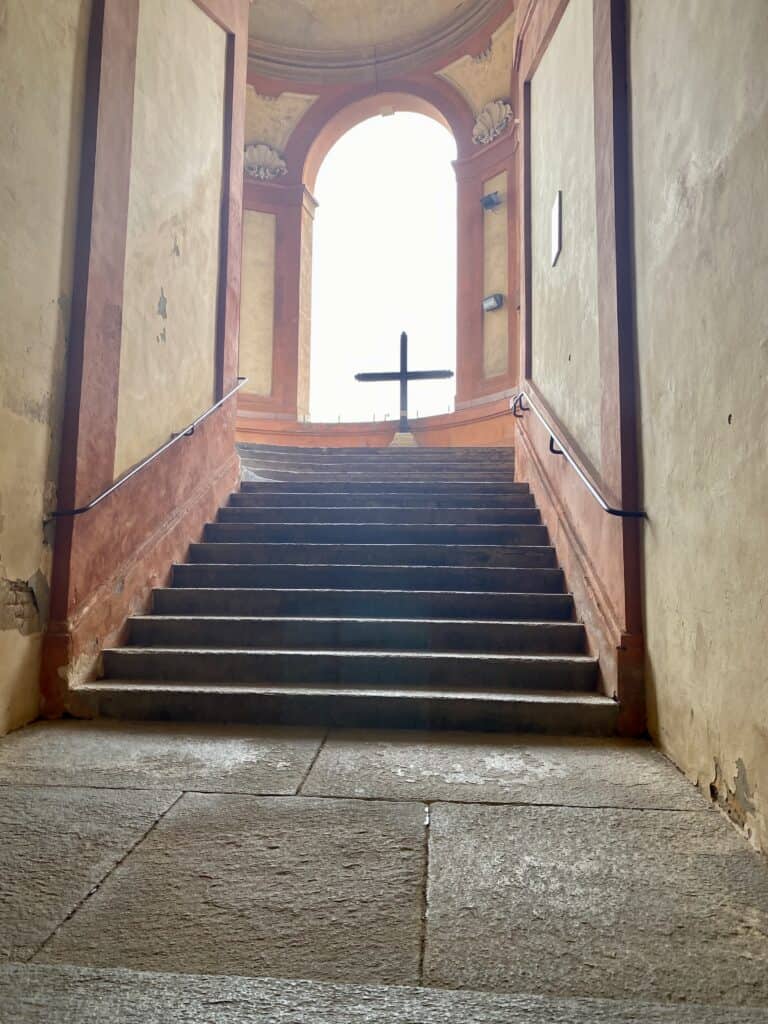
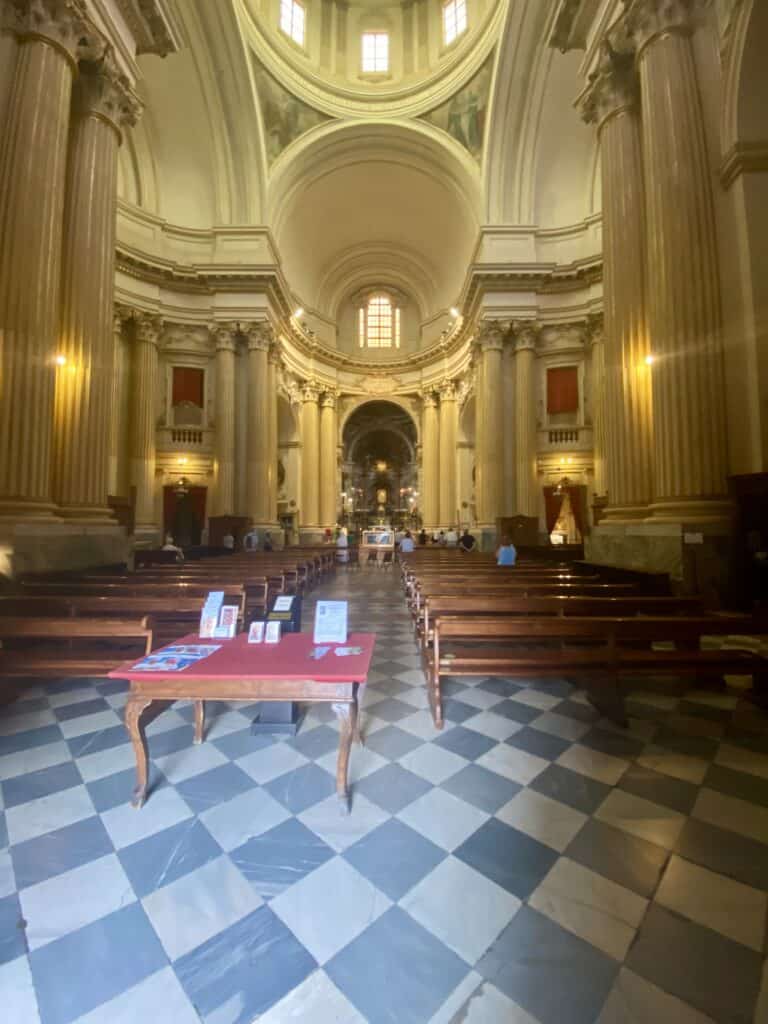
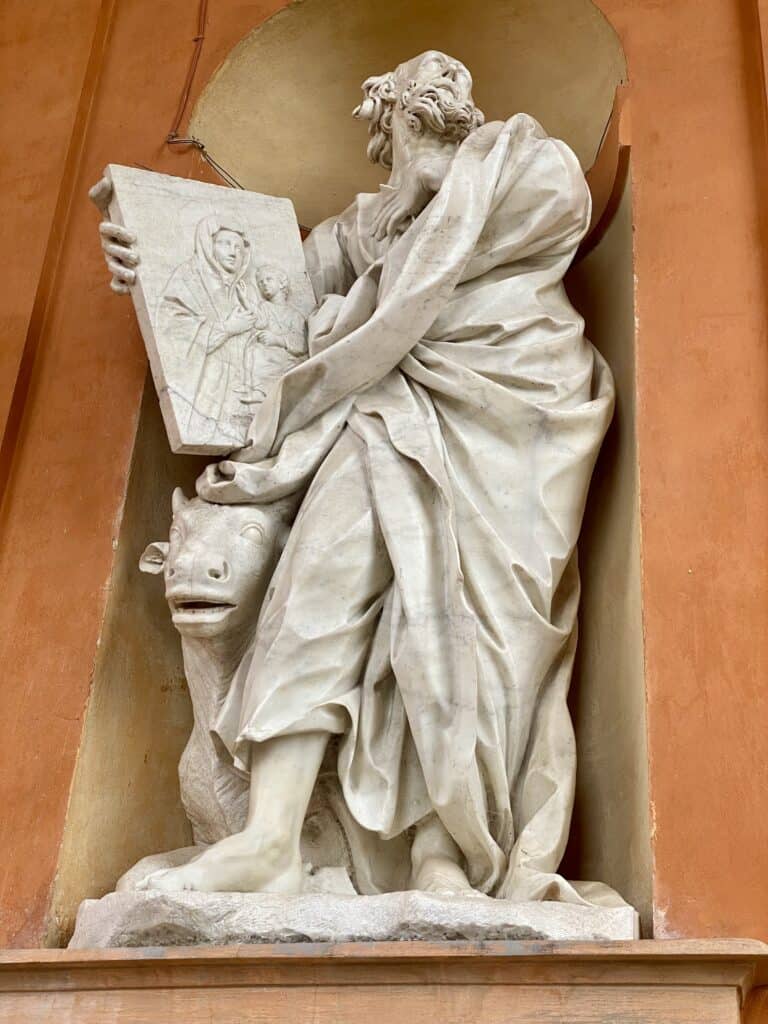
At the top, a panoramic terrace provides spectacular views.
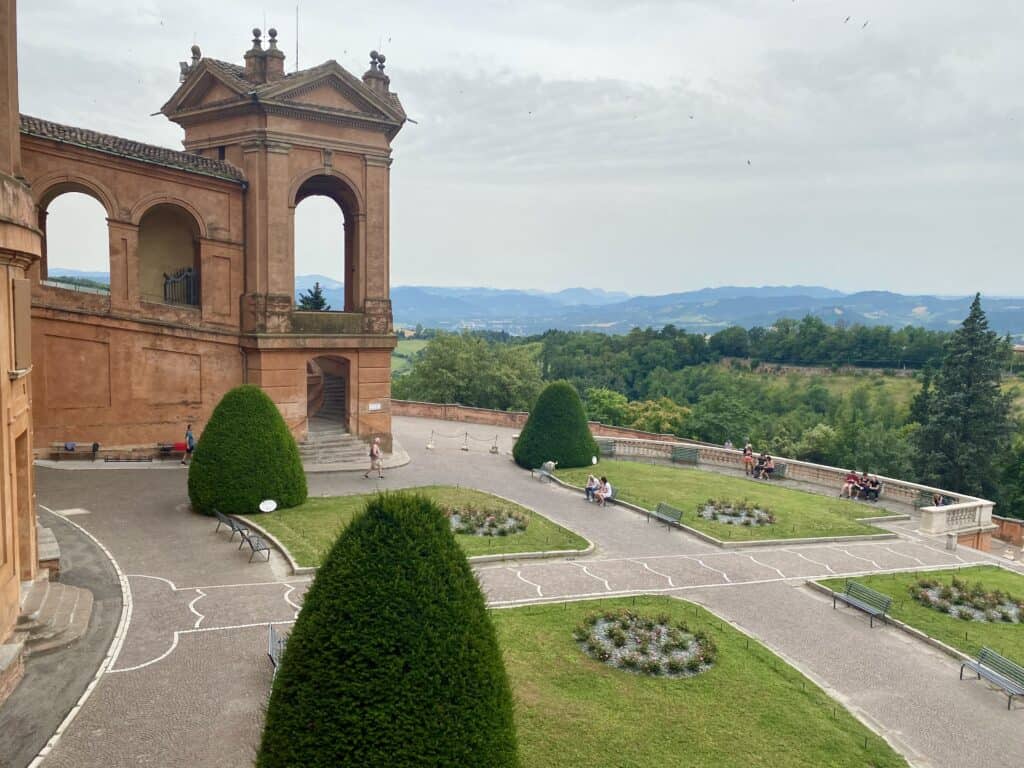
Once you return to Bologna, it’s time to treat yourself! During any visit to Italy, it is pretty much required to indulge in as much gelato as possible, as often as possible. (Avoid shops with heaping piles of uncovered gelato; they have a lower quality product.)
There are so many delicious choices; it can be difficult to rank the different shops. But our absolute favorite gelato in all of Italy was in Bologna: Cremeria Cavour. Long lines? Yes. Worth it? Yes!
Modena
Uncrowded, relaxed, and elegant, Modena is an enchanting city offering stunning art, opera, architecture, perhaps the best balsamic vinegar in the world, high-end automobile attractions, and, of course, outstanding food. Just a 20-minute train ride from Bologna, it is well worth at least one full day of your time.
12th-century Piazza Grande is the heart of the city, and is a car-free area. It hosts a variety of festivals, markets, concerts, and other events throughout the year. Combined with the Cathedral of Modena and the Ghirlandina Belltower, both overlooking the piazza, it is a UNESCO World Heritage Site.
Two large stone lions guard the Cathedral of Modena’s entry. But once you sneak past them to gain entry, you’ll be treated to beautiful art, sculptures, frescoes, and marbled columns and arches throughout.
Rising nearly 300 feet up from the cathedral is the Ghirlandina Belltower, the symbol of Modena, and visible from any point in the city. If you’re willing to climb 200 steps, you can reserve a ticket and climb to the top for sweeping views of the city and the surrounding Emilia-Romagna region.
Adjacent to the Cathedral of Modena is the 17th-century Palazzo Comunale. The former town hall has an exterior lined with arched porticoes and marble columns. Inside, several rooms are open to the public Monday – Saturday at no cost. The rooms feature paintings, tapestries, and frescoed ceilings.
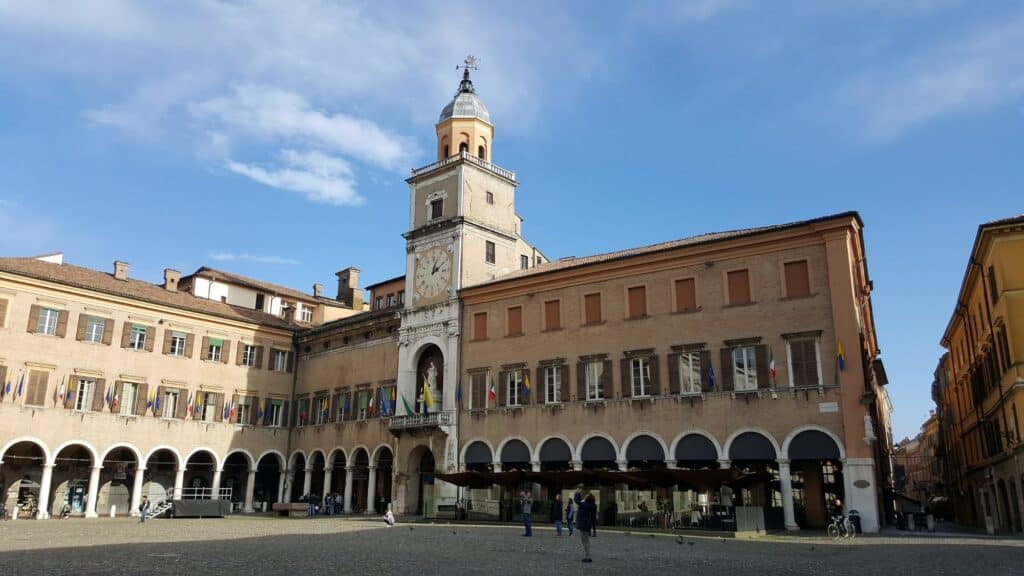
One small room, the Camerino dei Confirmati, contains a plain-looking, but deeply treasured, ancient oak bucket. That bucket was stolen from the Bolognese during Modena’s victory over them at the Battle of Zappolino in 1325. The history of the bucket is (mockingly) memorialized in an epic poem-turned-opera, La Secchia Rapita, by Alessandro Tassoni.
Nearby Mercato Albinelli (open every day except Sunday) is an eye-popping market filled with, well, everything. Upon entering, you’re greeted with the freshest possible produce – the colors of the cherries and tomatoes are so vibrant, they could be in a painting. The 65+ market stalls are also packed with meats, cheeses, flowers, pastas, wines, pastries, balsamic vinegar, jams, pre-made sandwiches, etc. There are also full-service restaurants and bars. The market is a destination unto itself.
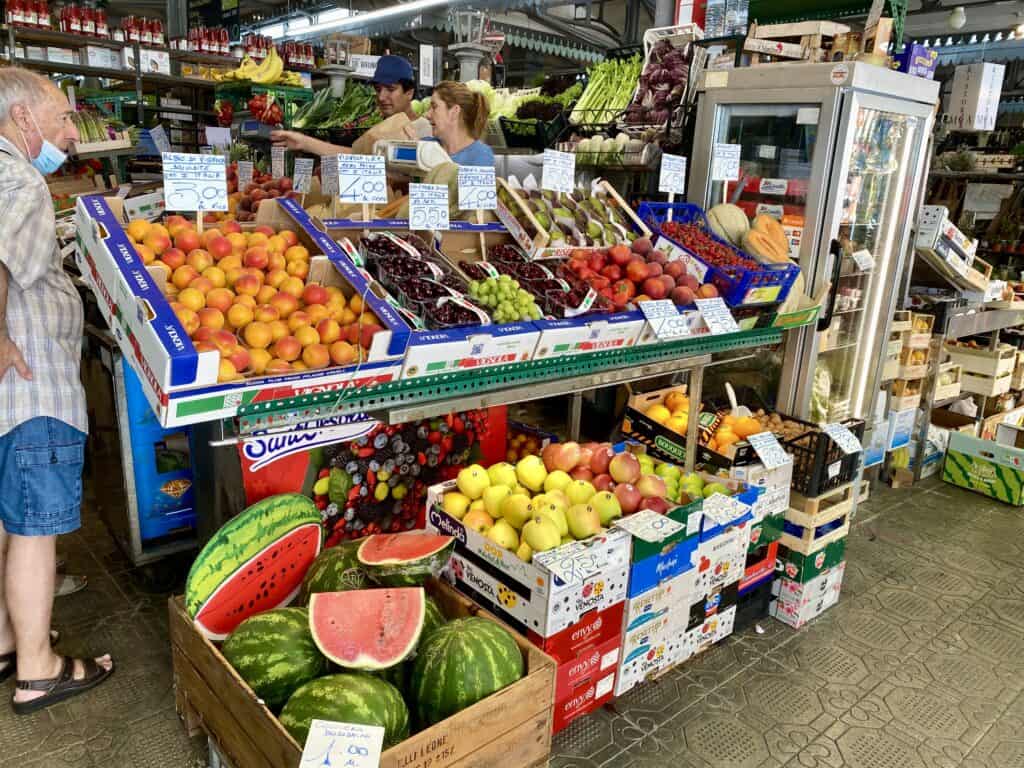
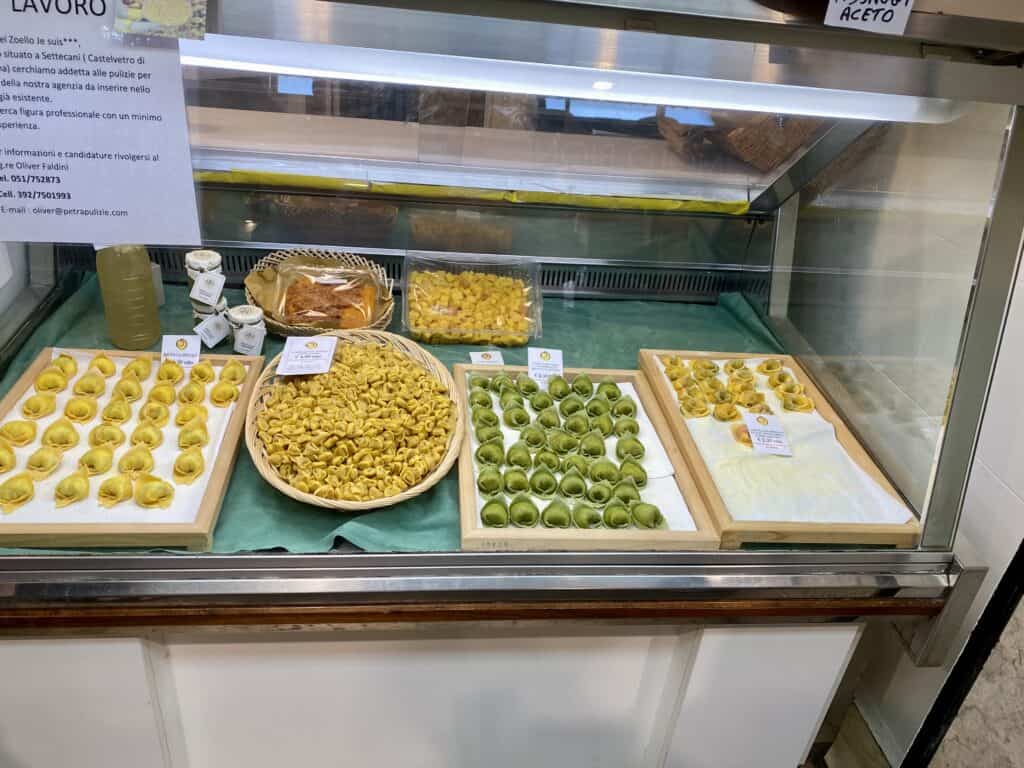
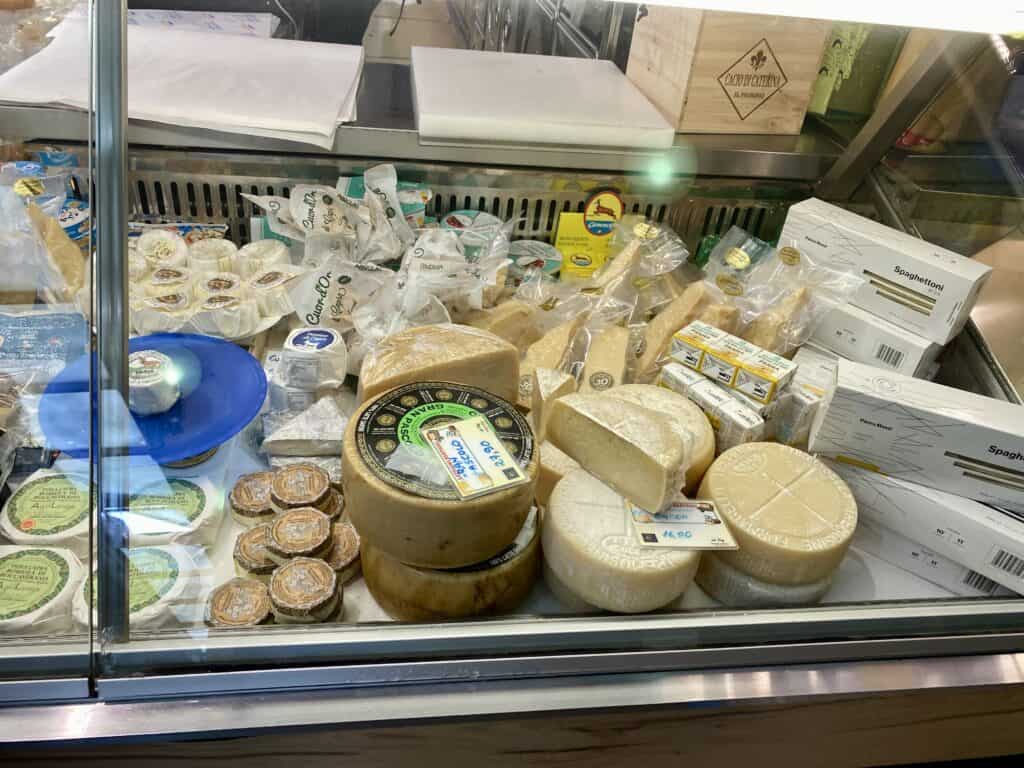
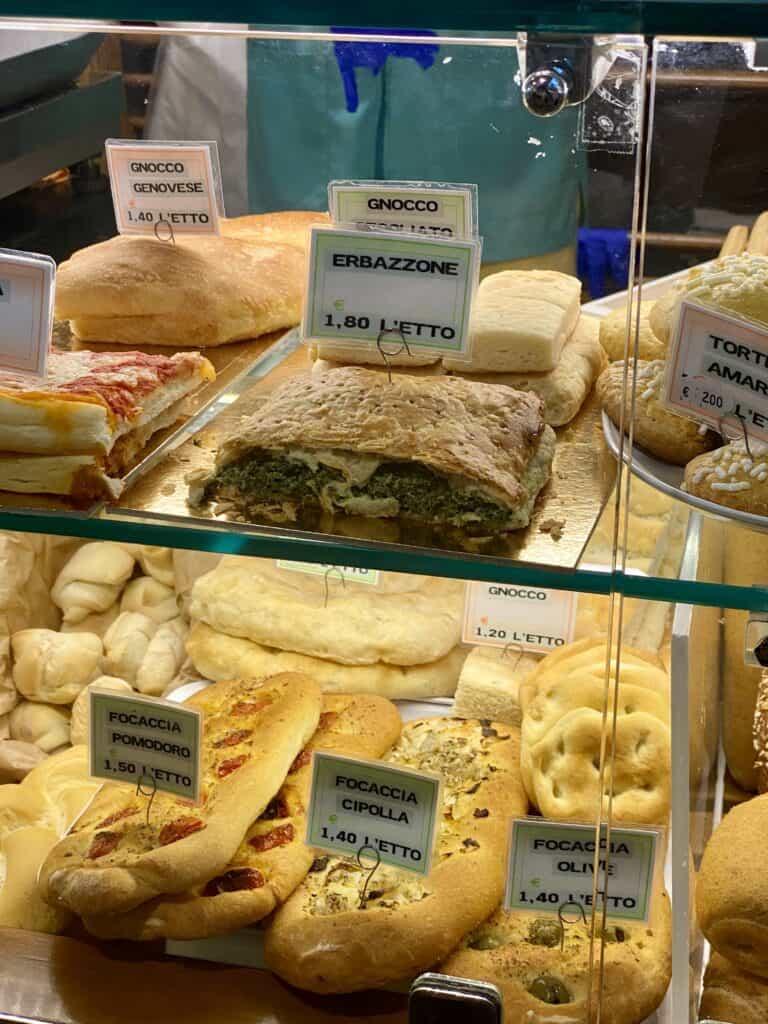
A few blocks from the market is La Consorteria 1966, a tasting shop devoted completely to Aceto Balsamico Tradizionale di Modena (Traditional Balsamic Vinegar of Modena), arguably the best in the world.
Producers of this specific vinegar have painstakingly earned the coveted DOP designation for artisan balsamic.
To qualify for the DOP, each bottle must be aged a minimum of 12 years, and often up to 25 years. It is not a common product in the US.
Inside La Consorteria 1966, the knowledgeable hosts provide a history of the balsamic, and the opportunity to taste different types and ages on adorable little porcelain spoons. Each of the 8 kinds we tasted was decidedly unique. Prices to take bottles home ranged from $60 to many hundreds of dollars.
The balsamic in our cupboard at home is from Modena, too. But that is where the similarity ends.
In the photo below, the balsamic on the left, next to the fancy box, is the “traditional” with the DOP designation. (You can see the designation in the second photo on the back of the bottle.) That bottle, purchased in Modena, was about $80. On the right are two perfectly nice bottles of regular and white balsamic that we use frequently, both from Modena, but not labeled traditional or DOP. We purchased those at our grocery store in Des Moines for around $18 and $10, respectively.

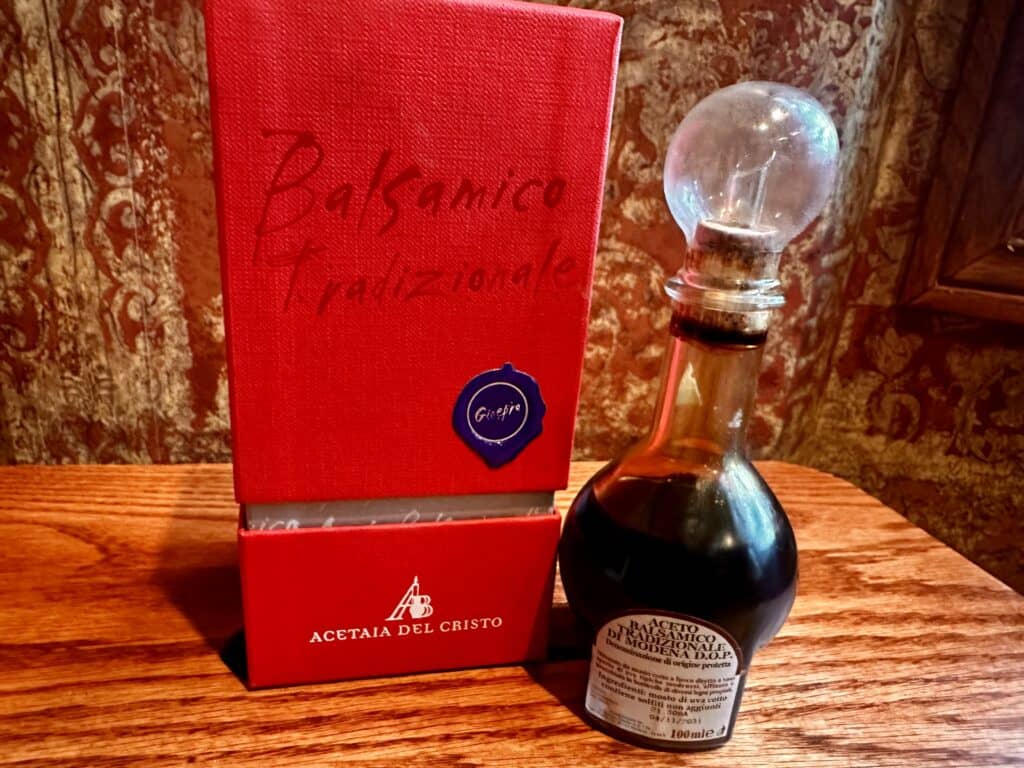
Both types are delicious, but they are not at all alike. The type we normally buy here is lighter in both flavor and texture, and we use it liberally for things like Caprese salads, green salads, drizzled over pizza, as a marinade for chicken, and as a dipping sauce, for instance.
The DOP balsamic has an intense flavor, is dense and deeply colored, and has an almost overwhelming aroma. Just a few drops can be enough to flavor a dish. It adds a whole new dimension to the food when sprinkled over red meat and seafood, as well as cheese such as Parmigiano Reggiano. A tiny bit over fresh fruit makes a decadent dessert. And it is outrageously good over ice cream.
Though it is not fiscally practical to keep as a staple in the pantry, if you ever have the opportunity, tasting Traditional Balsamic Vinegar of Modena, DOP is a memorable experience.
With any extra time in Modena, Palazzo dei Musei is just a few minutes walk from Piazza Grande and houses multiple small museums as well as a library. With a car or taxi, the home/museum of famed opera tenor Luciano Pavarotti is about 9 miles from Piazza Grande. Another delightful activity in Modena is just to stroll through the city center, viewing the architecture and stopping at one of the abundant cafes.
That is, unless you’re a car lover… in that case, there is no question where you’ll go.
Car lovers flock to the Emilia-Romagna region, and especially to Modena. It is home to two Ferrari museums. The Enzo Ferrari Museum focuses on the life and work of the company’s founder, Enzo Ferrari, and is walking distance from Piazza Grande (or a 5-minute shuttle ride from the train station).
The Maranello Ferrari Museum, located at the Ferrari production factory, is a 30-minute drive or a twice-daily shuttle ride from the first museum. It displays past, present, and future models of the cars, and offers driving simulation experiences. For a hefty price, you can even include a test drive of various Ferrari models.
The shuttle provides transportation back to the Modena train station.
Modena is also home to the Maserati factory and showroom, about a 25-minute walk from Piazza Grande. The factory offers 40 and 90-minute tours on weekdays, with a reservation. With a car or by booking a tour, you can also visit the Pagani Factory, where you can view multi-million dollar cars, and the Lamborghini Museum, located between Modena and Bologna.
Parma
It is a one-hour train ride from Bologna to charming Parma, the second-largest city in Emilia-Romagna. From the train station, it is a short walk to the historic city center, which is mostly pedestrian-only.
The lovely cobblestone streets are filled with shops, restaurants, and cafes, with gorgeous architecture at every turn. Plentiful public fountains are available, with cool, potable water streaming from the mouths of stone gargoyles, animals, and humans. Such fountains are found throughout Italy, but seem especially abundant in Parma.
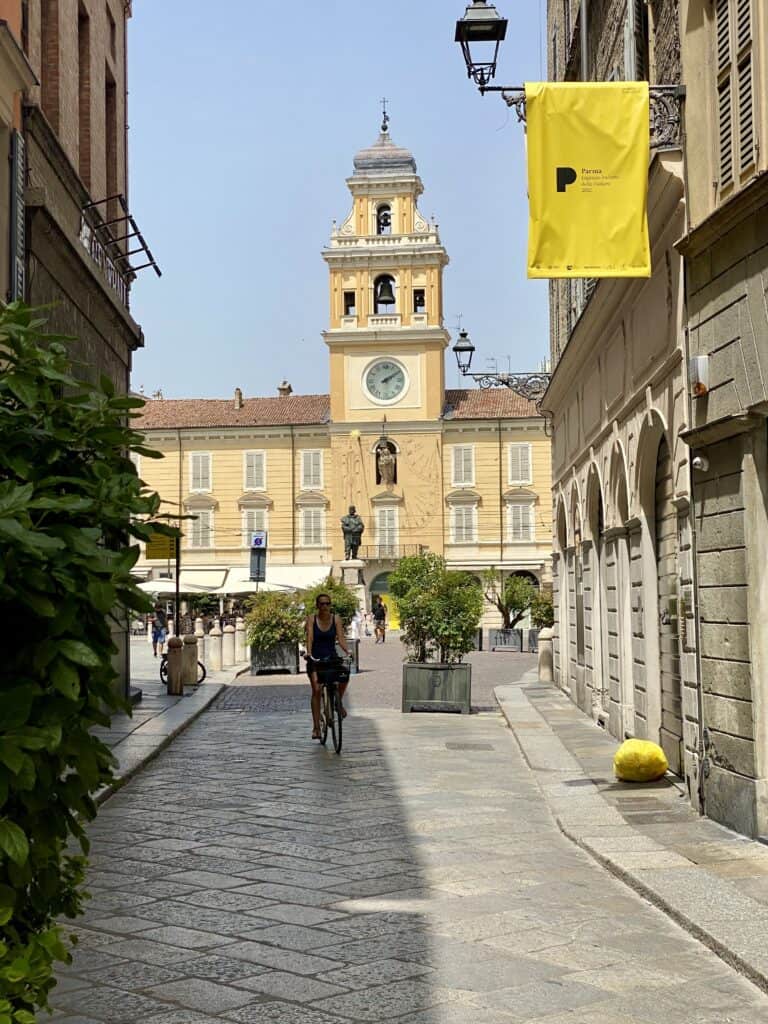
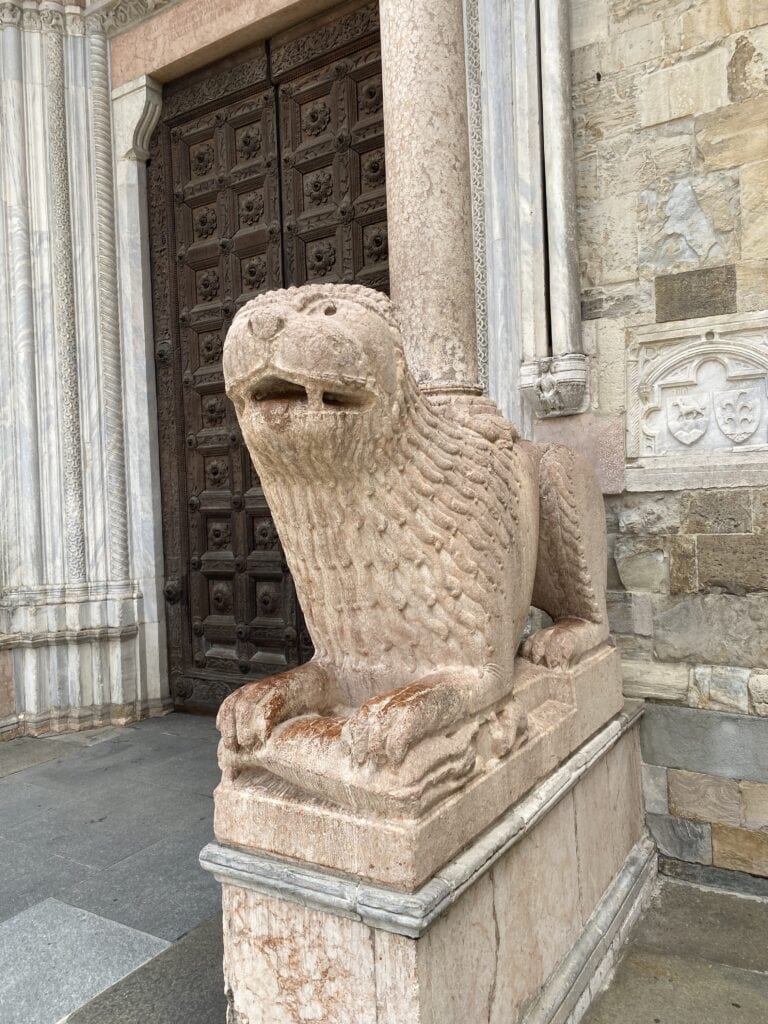
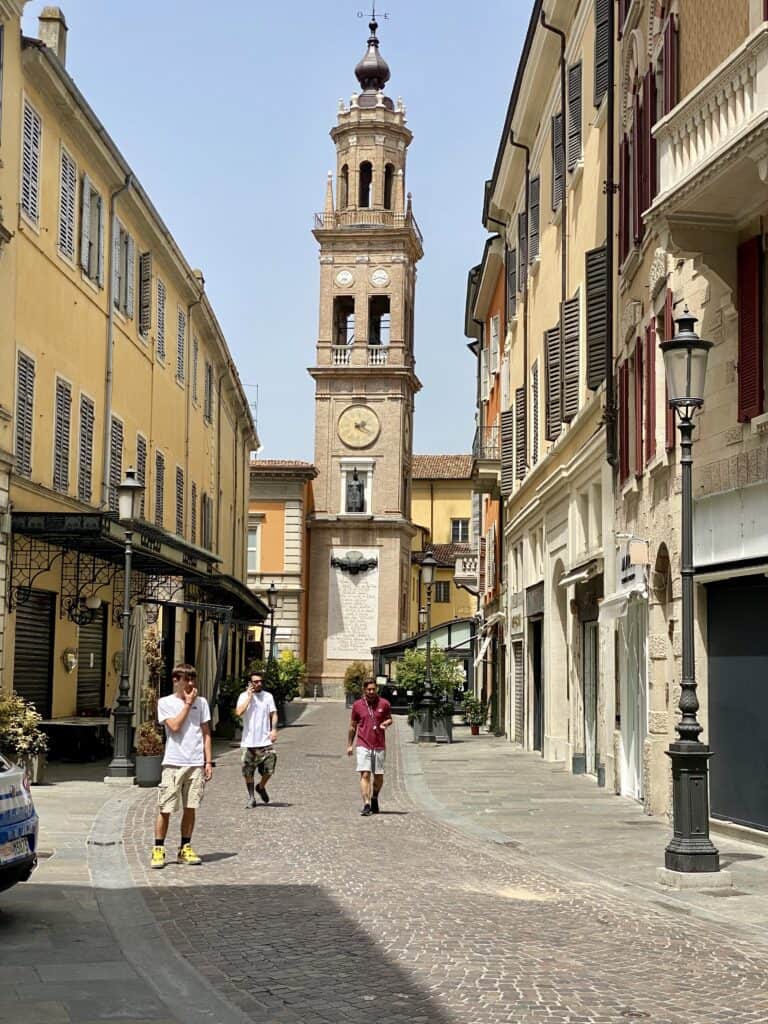

The historic core of Parma, with the Piazza Duomo at its heart, is a UNESCO World Heritage Site. The centerpieces of the Piazza Duomo are the Cathedral of Parma and the Baptistry of Parma, next door. The Romanesque Cathedral is believed to have been originally built in the 6th century. After suffering extensive damage from a fire in 1058 and an earthquake in 1117, it was restored and expanded in the 12th and 13th centuries. Its dome features stained glass windows and spectacular frescoes by Antonio Allegri da Correggio, depicting the assumption of the Virgin Mary.
The baptistry, completed in the 13th-century, is an important medieval monument in Europe, as it represents the early stages of the transition from Romanesque to Gothic architecture.
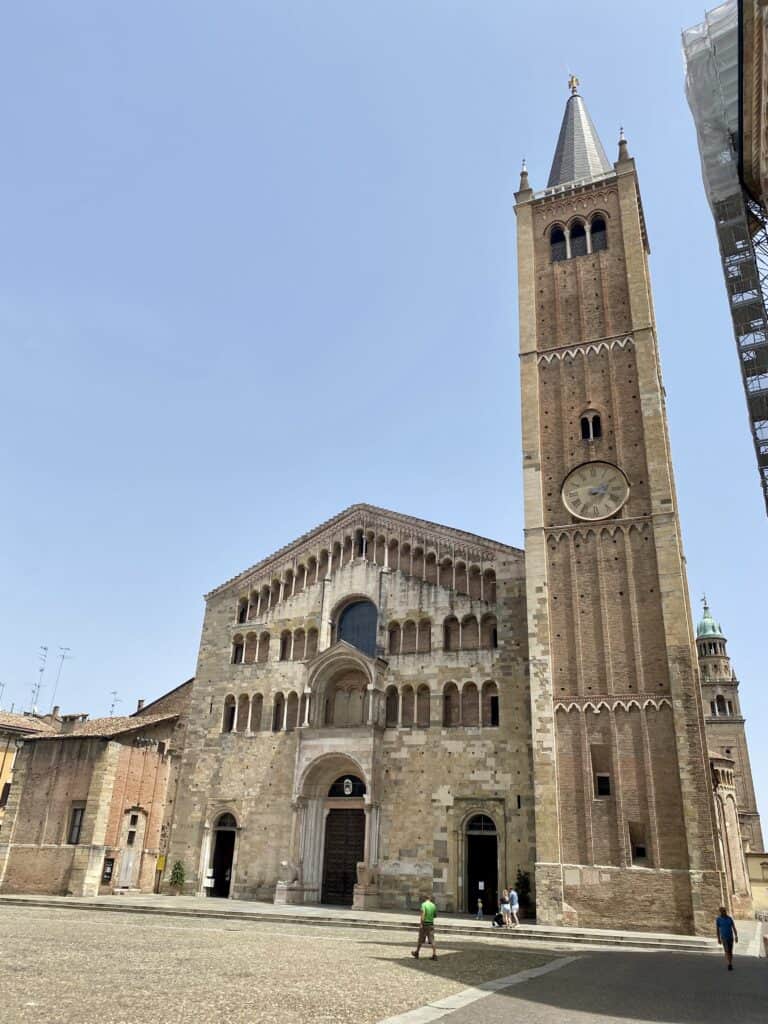
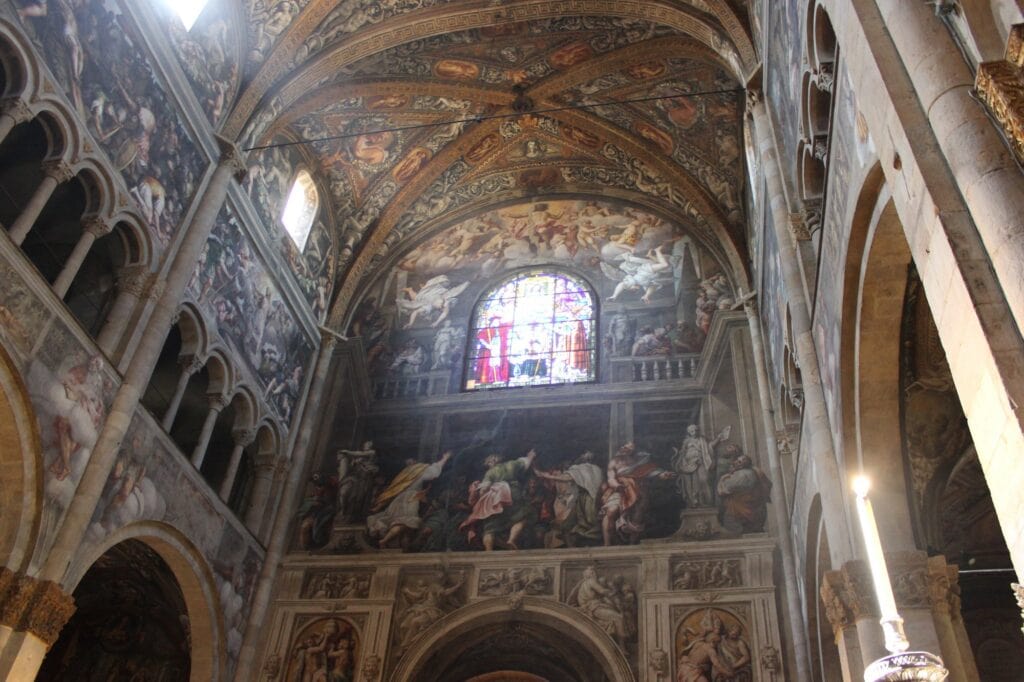
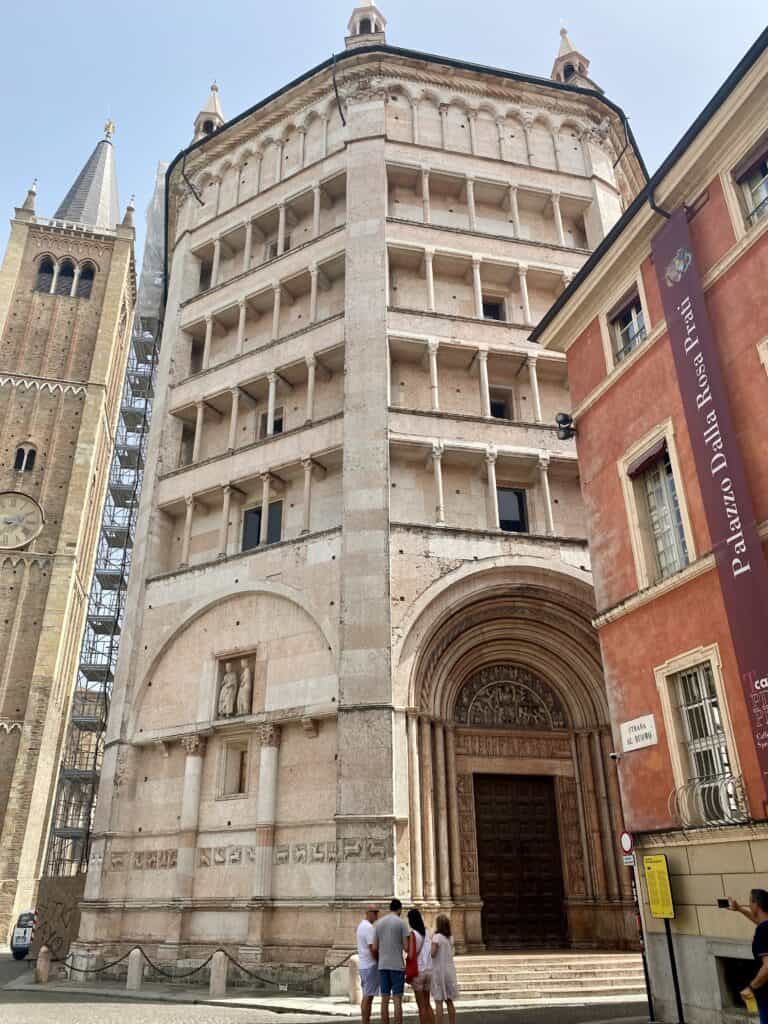
Composer Giuseppe Verdi spent much of his life living in and around Parma, and the city has streets, memorials, and monuments dedicated to him, as well as the month-long Festival Verdi, one of the premier opera events in the world. (In the bottom photos, Verdi sits in the middle of the Monument to Giuseppe Verdi, surrounded by muses and mythological characters.)
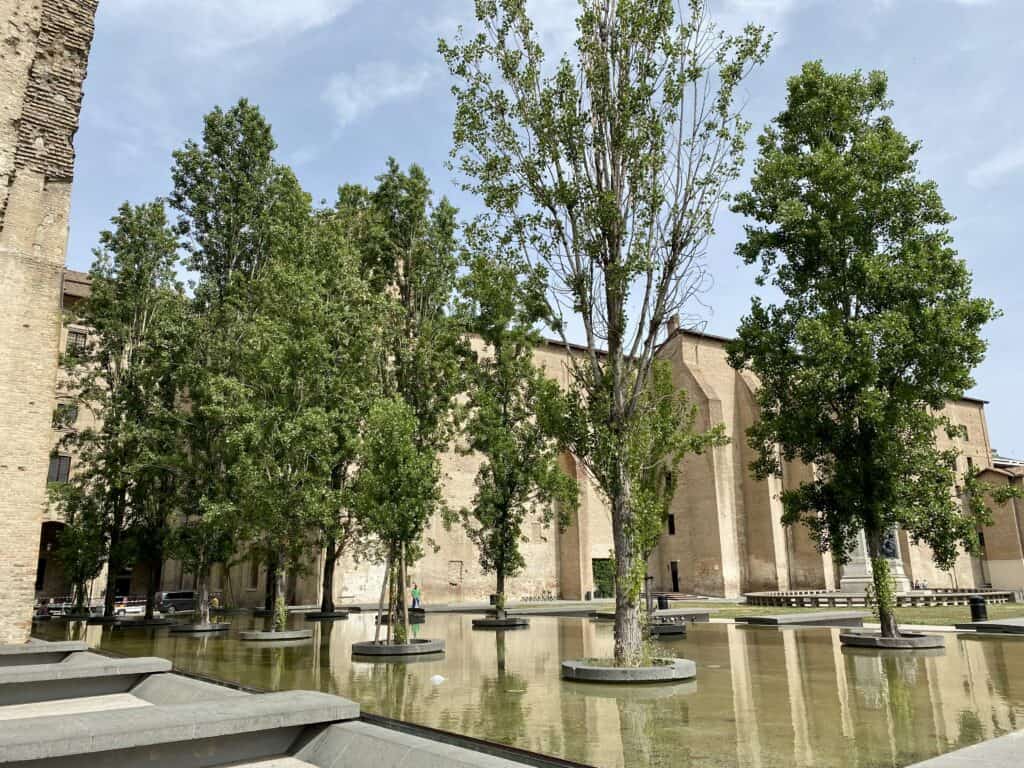

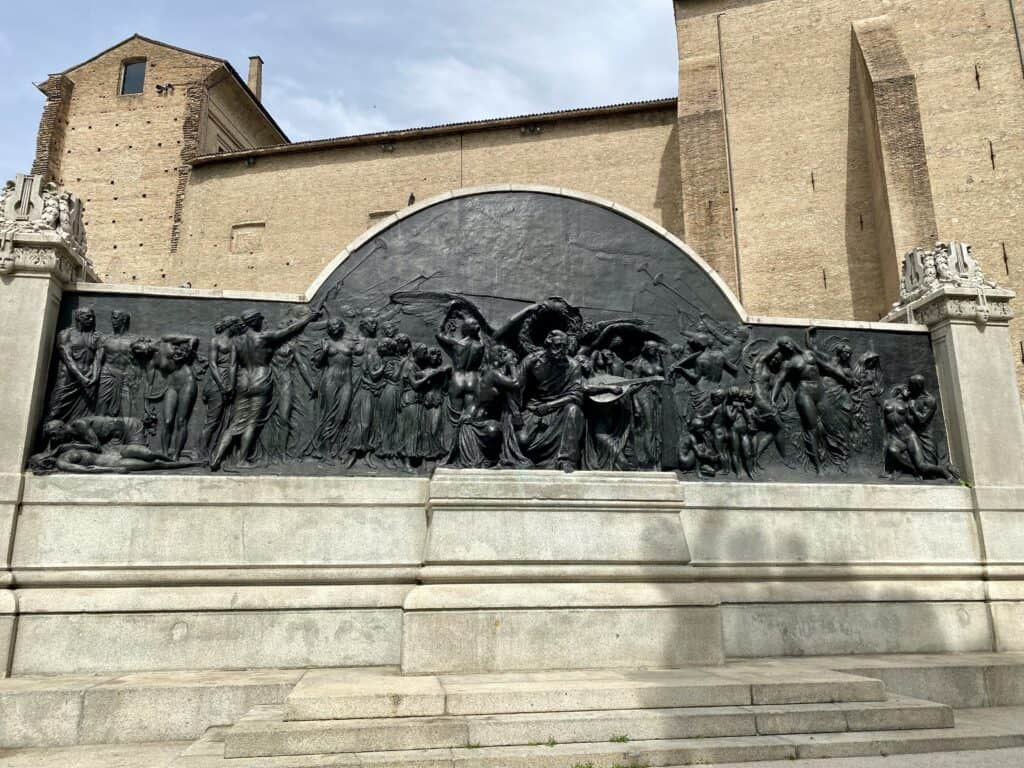
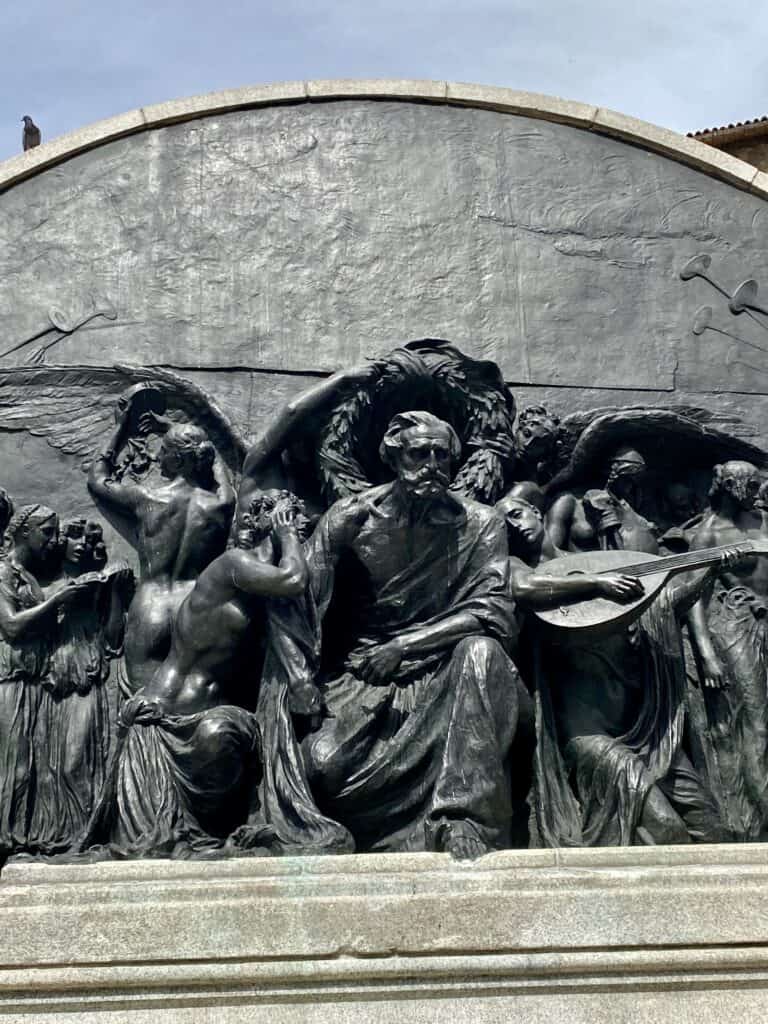
The biggest attraction in Parma is the Palazzo del Pilotta, a sprawling complex of buildings dating back to the 1500s, which was redeveloped between 1986 and 2001 to house multiple museums and an art school.
Inside the Palazzo, the National Gallery holds some of the most valuable paintings and artifacts in Italy. They were part of the art collection owned by the Farnese family, which ruled Parma from 1545 – 1731, and whose presence is still felt throughout the city today, much like the Midicis in Florence.
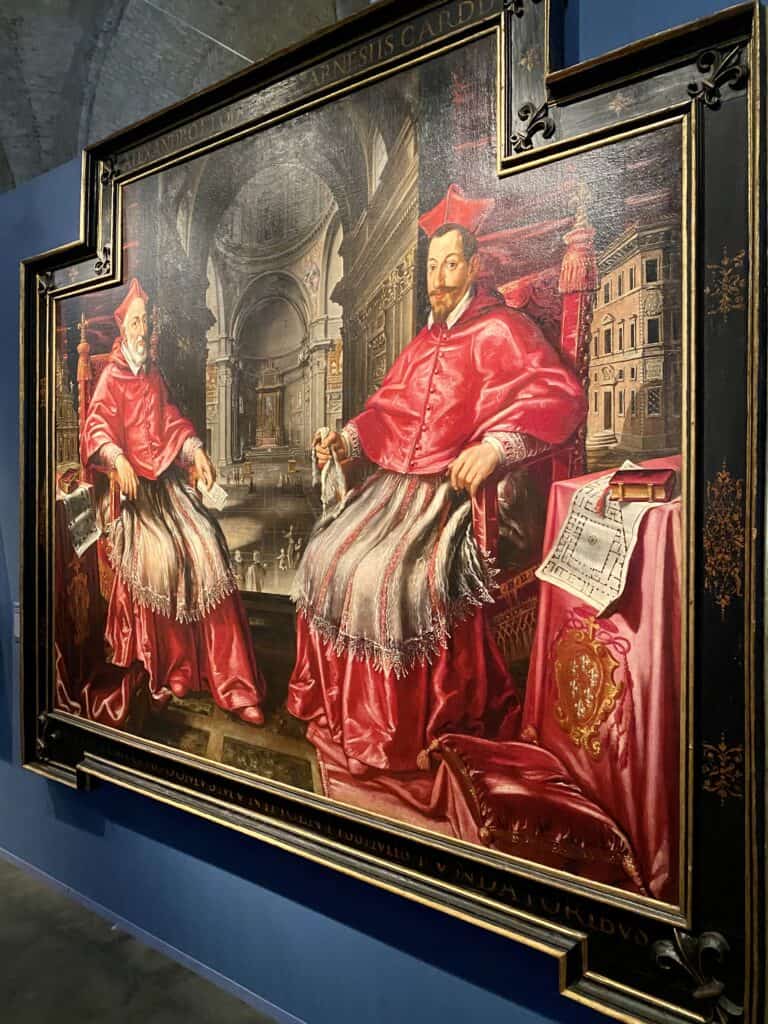
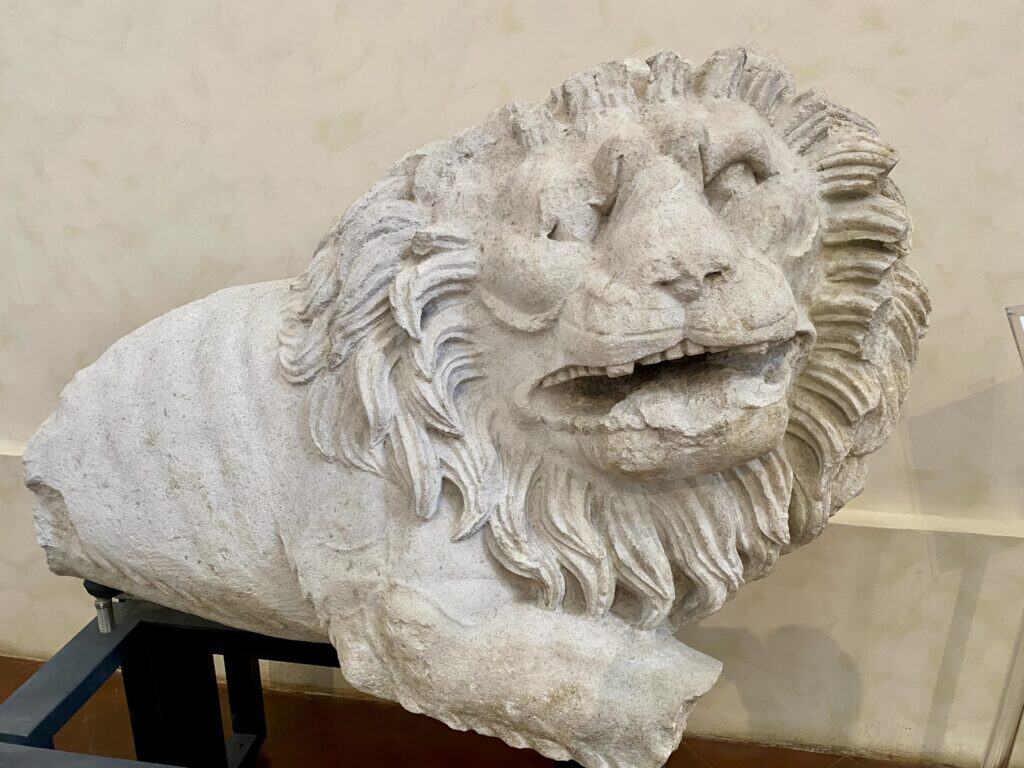
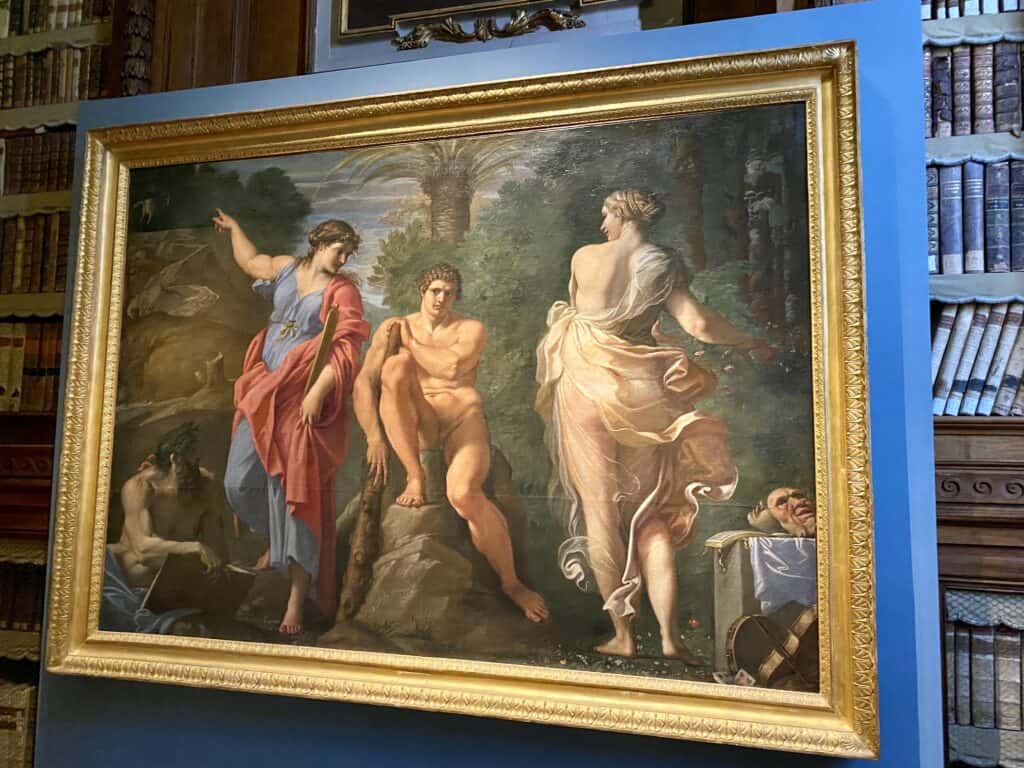
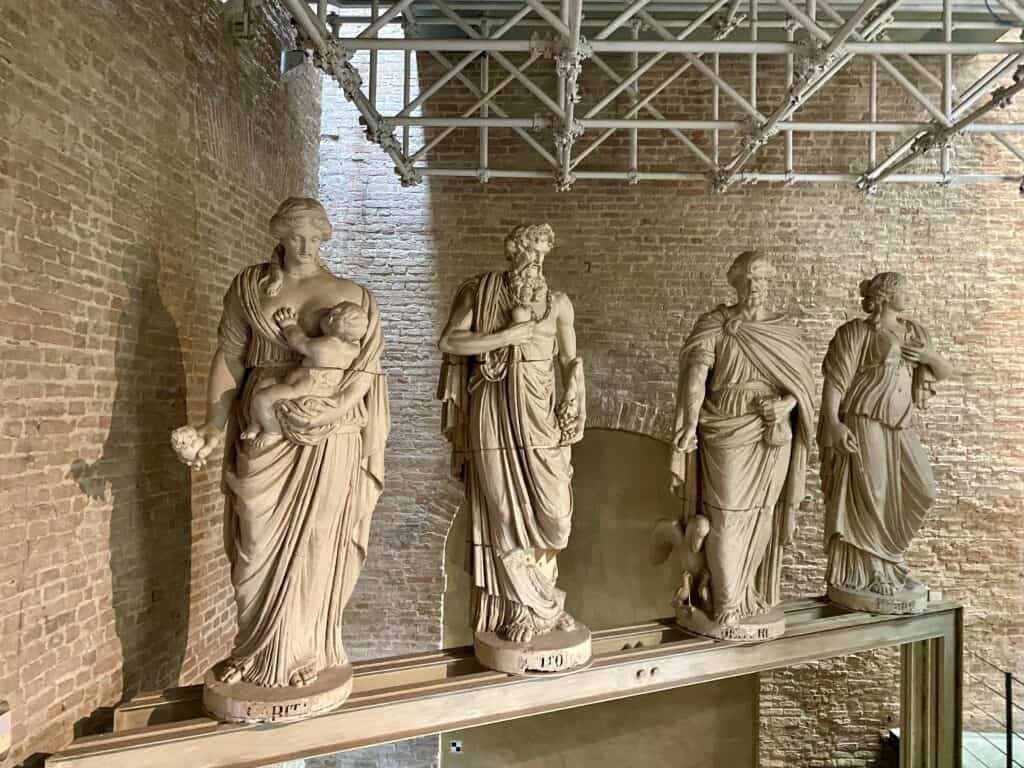
Next to the National Gallery, the breathtaking Farnese Theater is one of the largest Baroque theaters in Europe, dating back to 1618. The architectural marvel was originally built at the order of Ranuccio I, fourth Duke of Parma, to impress Cosimo II, the Grand Duke of Tuscany, during the Duke’s visit to Parma. The wooden theater was nearly destroyed in WWII but was rebuilt following the original drawings, and using materials recovered from the bombing. The restoration was completed in 1960. The theater is still used today for musical and theatrical performances.
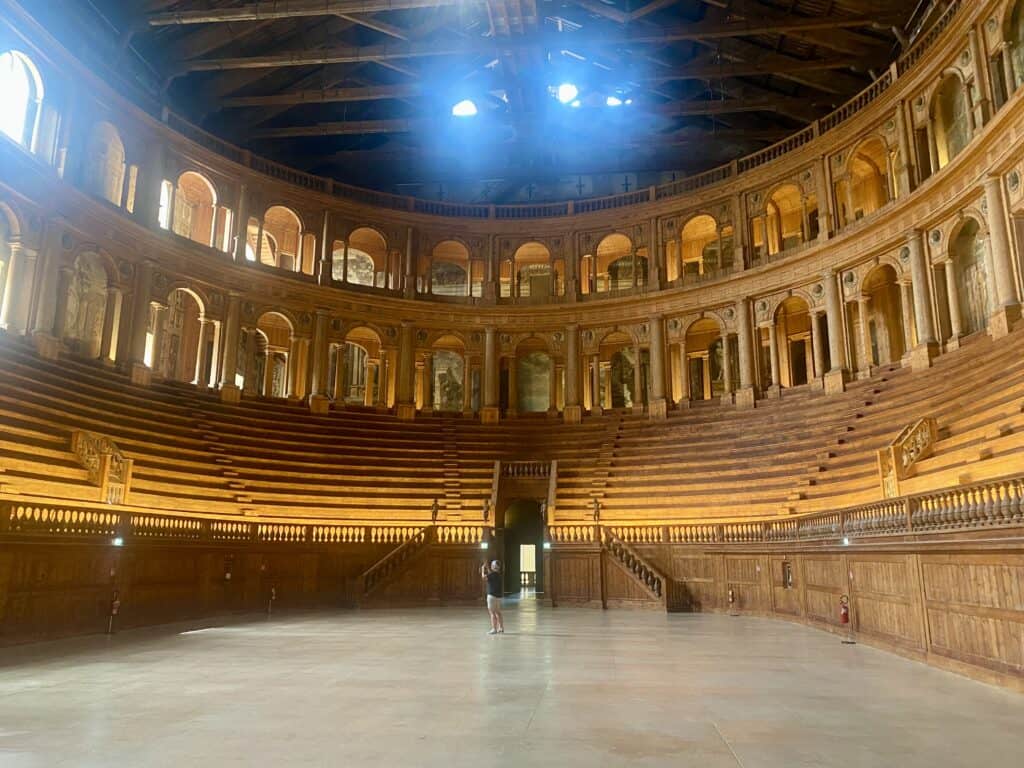
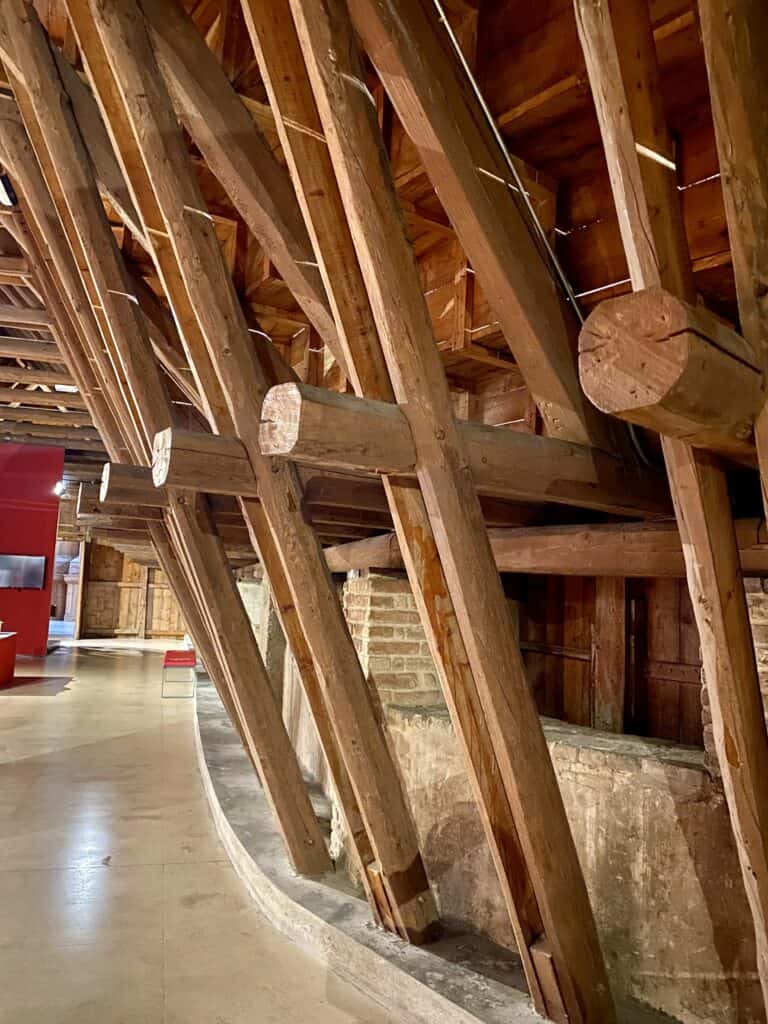
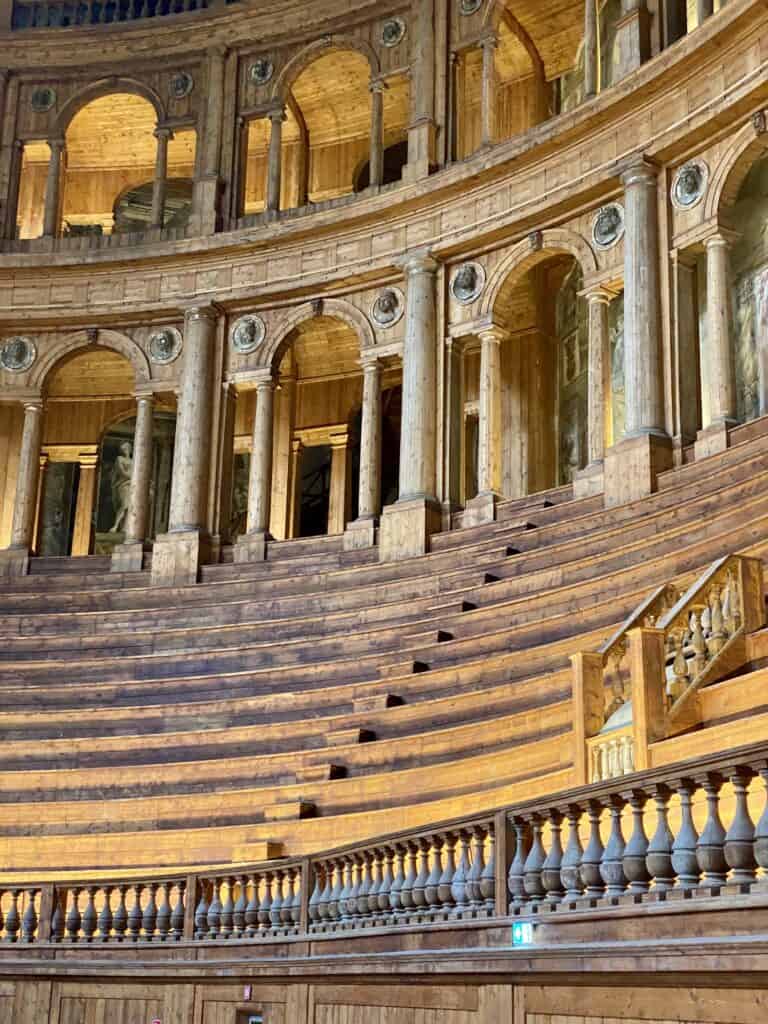
The two-story National Archaeological Museum of Parma, founded in 1760, has two sections. The upper floor houses a collection of Greek, Etruscan, Roman, and Egyptian artifacts, and the lower floor is comprised of objects found in the area of Parma, dating back to the Stone Age and Bronze Age.
This complex of museums is huge, and it is hard to see everything. But be sure not to miss the fascinating Palatine Library, housing more than 70,000 books and manuscripts, including medieval biblical manuscripts. It was formed in 1761 in response to an effort by the French Prime Minister of Parma to enhance the overall cultural education of the public. (What a concept!)
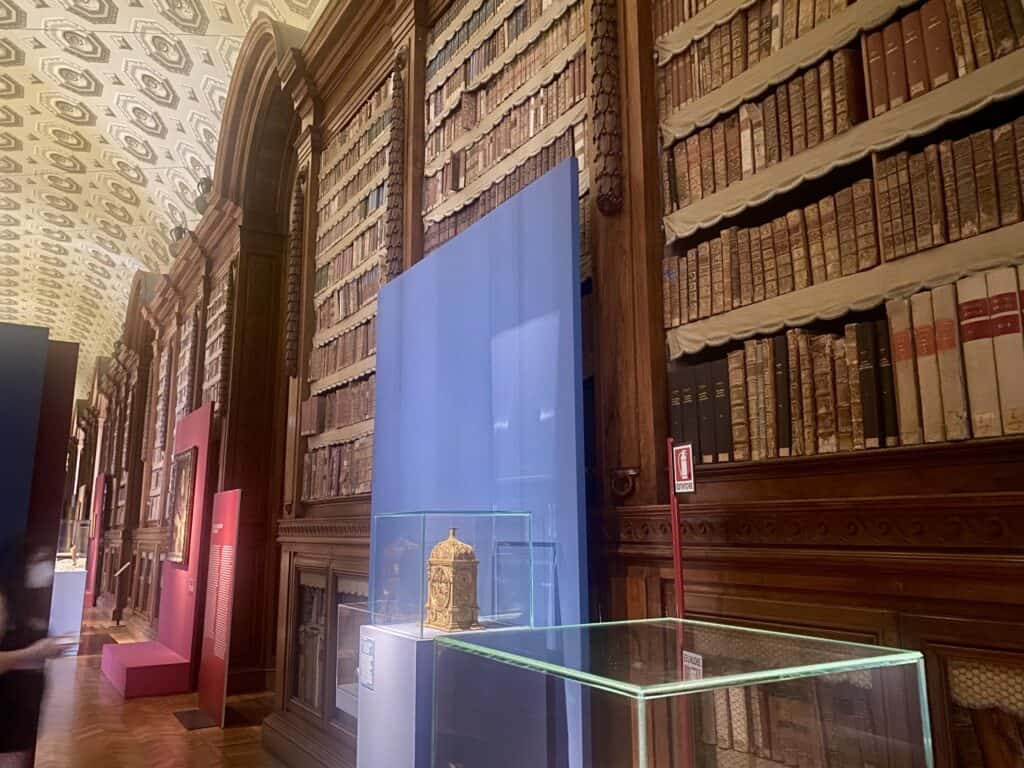
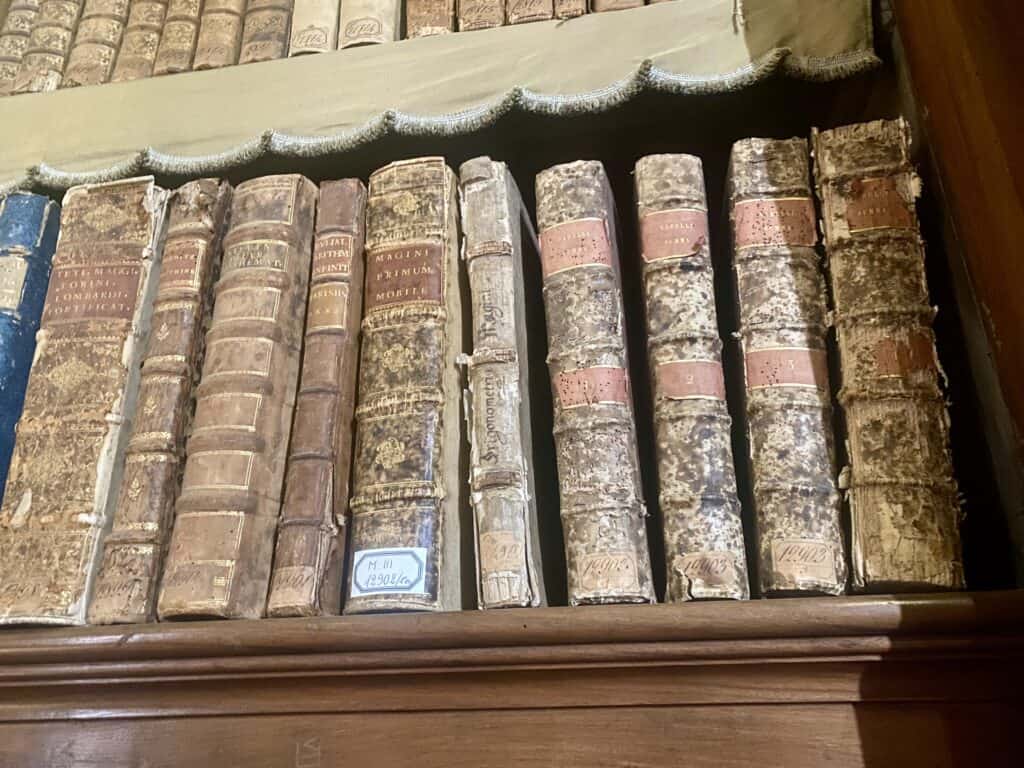
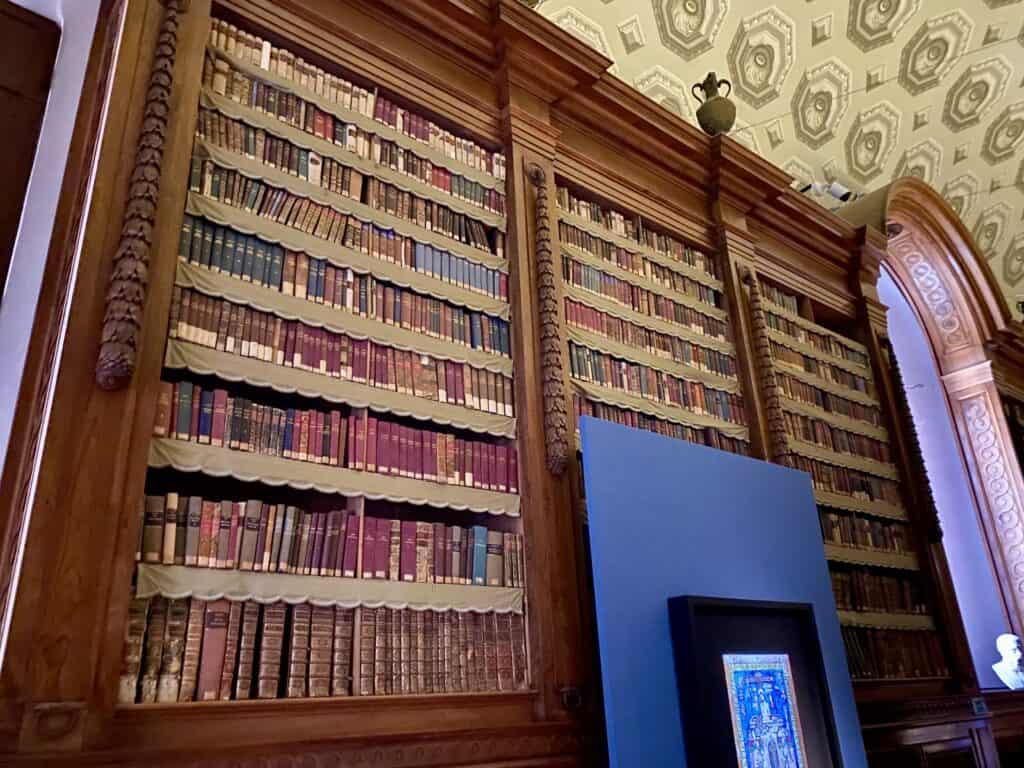
One can’t go wrong with food in Parma. The streets are lined with restaurants and cafes serving some of the best traditional Italian meals anywhere. Some noted favorites include the casual, female-owned Officina Alimentare Dedicata, Osteria del 36, one of the oldest restaurants in the city, and upscale Sorelle Picchi with a large, heated patio.
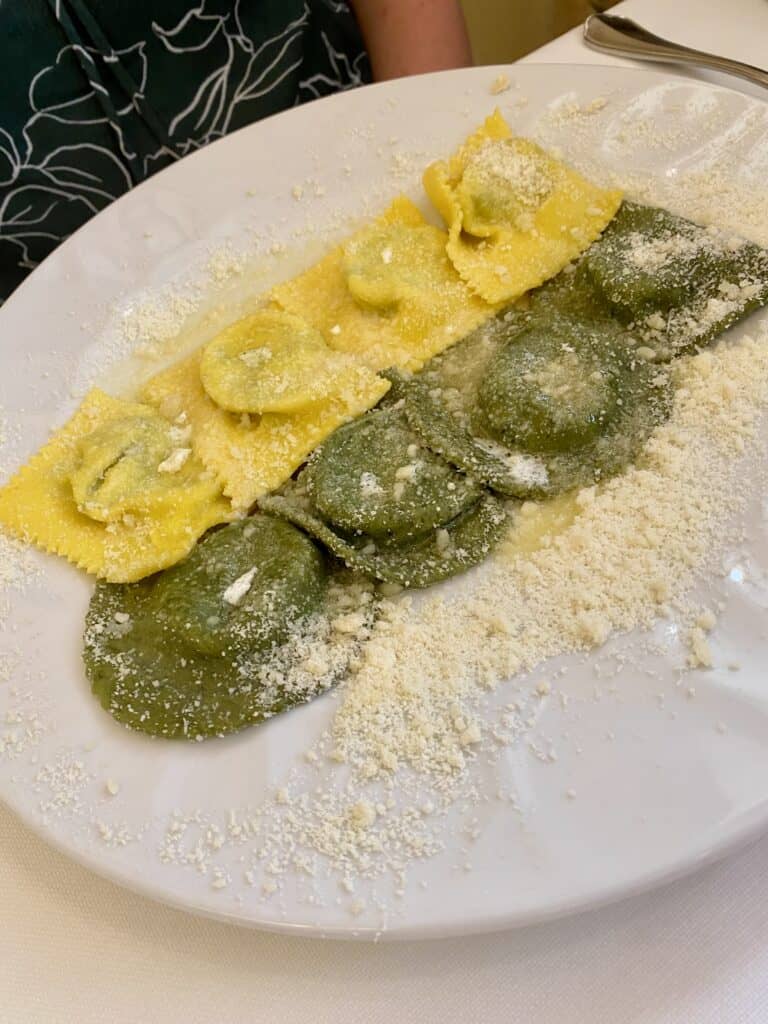
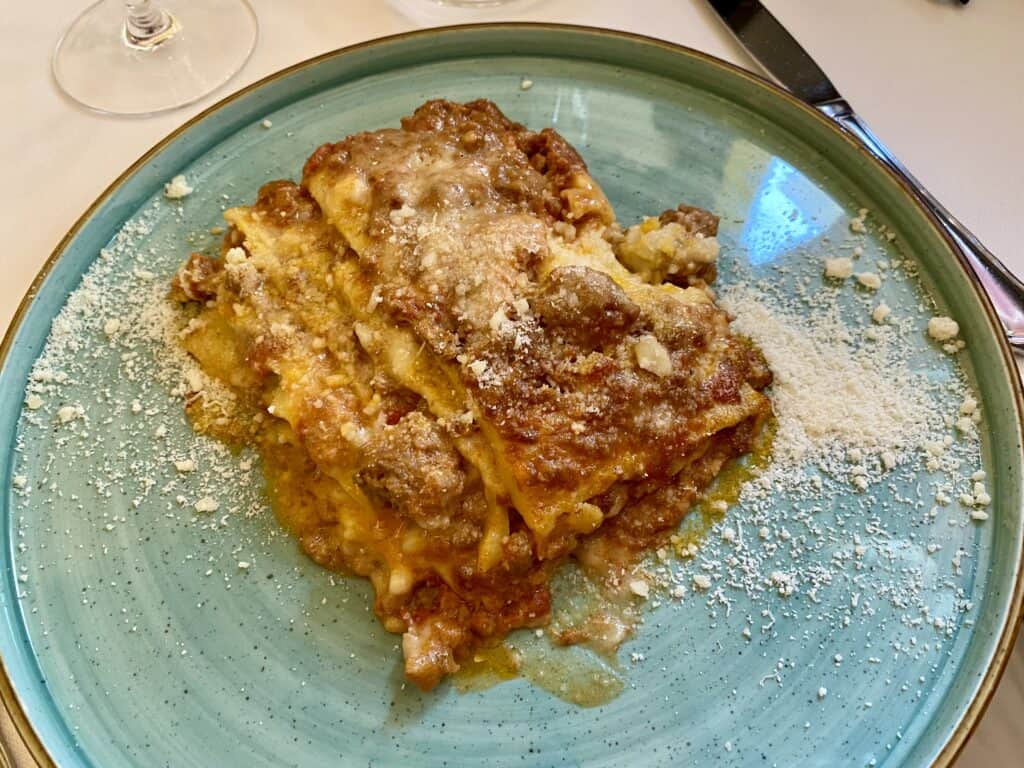
If you’re looking to dig a little deeper into the area’s food, taking a specialized food tour is a great option. These are not your average food tours! Many begin early in the morning and head to a dairy farm to witness the production of Parmigiano Reggiano (see more information below) and to taste the cheese at different ages. The next stop is a prosciutto farm to see the production process and aging room. This is generally followed by a tasting accompanied by wine and cheese. Some of these tours also include a visit to an Aceto Balsamico Tradizionale di Modena producer, along with a tasting.
A Bit More About the Food
Without question, one of Emilia-Romagna’s biggest claim to fame is its food. Many of its regional specialties are known throughout the world; others are generally scarce in other areas, making them all the more special.
Like much of Italy, Emilia-Romana embraces the slow food movement, focusing on local, sustainable, non-processed foods. It emphasizes quality and enjoyment over quantity and speed.
Favorite regional specialties include:
Parmigiano Reggiano – The famed cheese takes its name from a combination of the city of Parma and the nearby city of Reggio Emilia. It is one of the biggest claims-to-fame of the entire Emilia-Romagna region. The cheese dates back to the year 1200, and was created by monks seeking to make a cheese that can be preserved for extended periods of time. It became a protected DOP (Denominazione di Origine Protetta) product in 1612 and remains so today.
There are many places to sample it throughout Emilia-Romagna. It is amazing how different it looks, feels, and tastes at different points in the aging process. The photos below show it at 12 and 36 months. The cheese gets more crumbly and more intensely flavored as it ages and doesn’t even taste like the same cheese. The photo on the right is two 75-pound wheels of Parmigiano Reggiano (worth about $1000 each) just sitting outside a shop in Parma during their extended lunchtime closing hours.
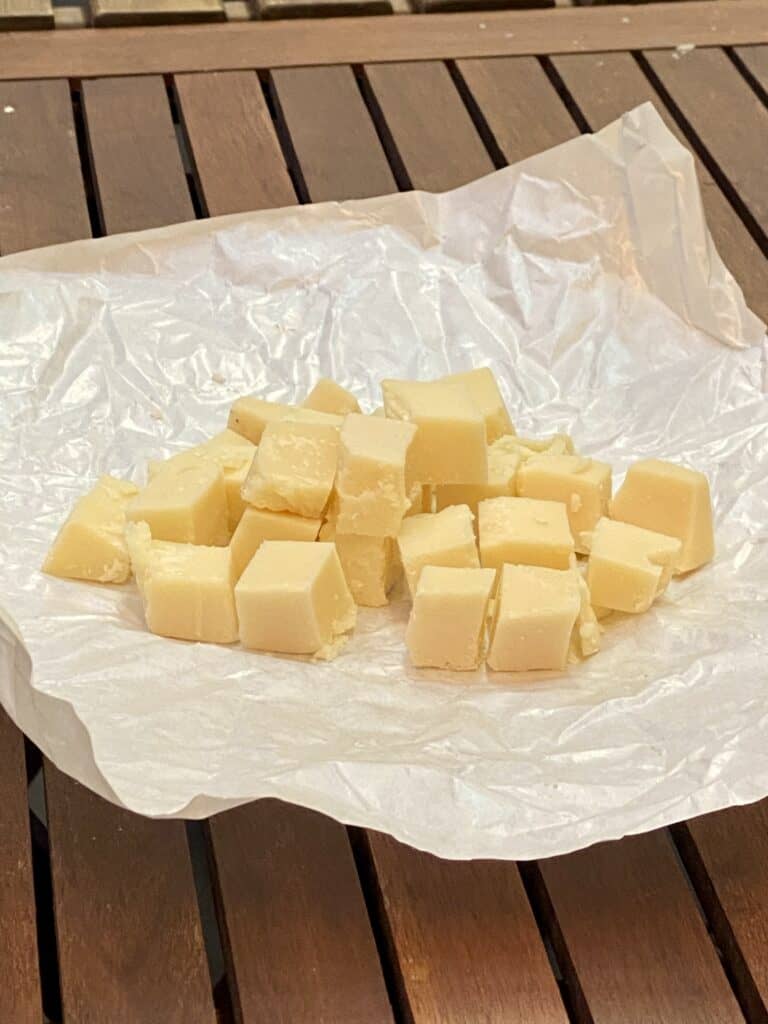
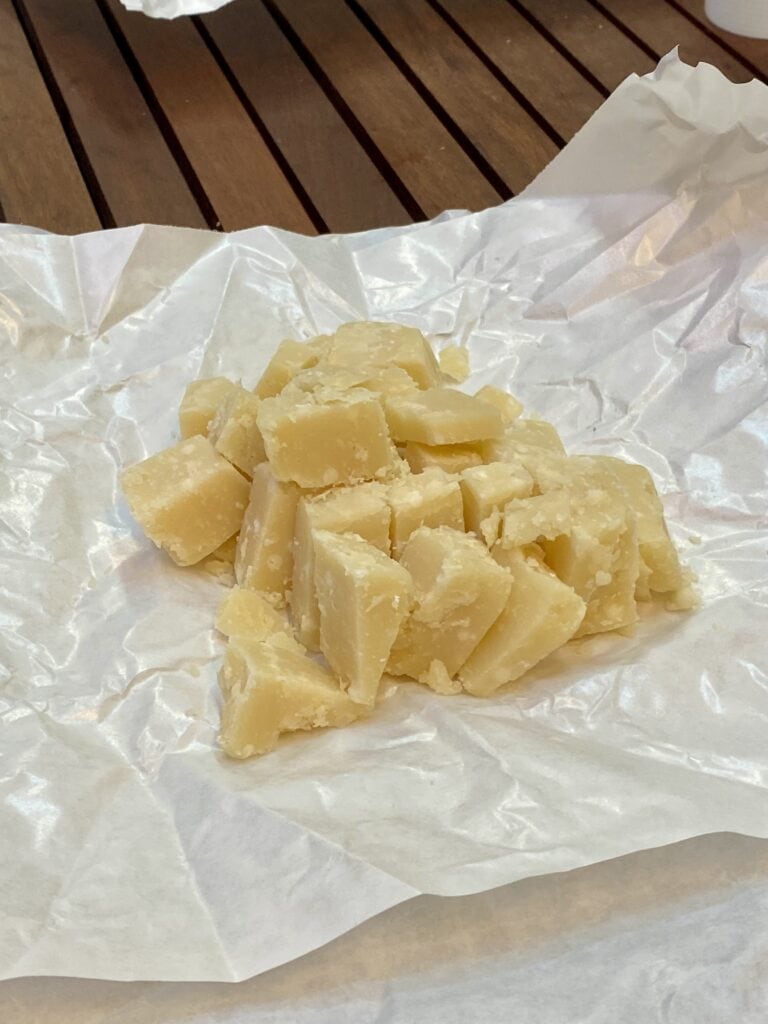
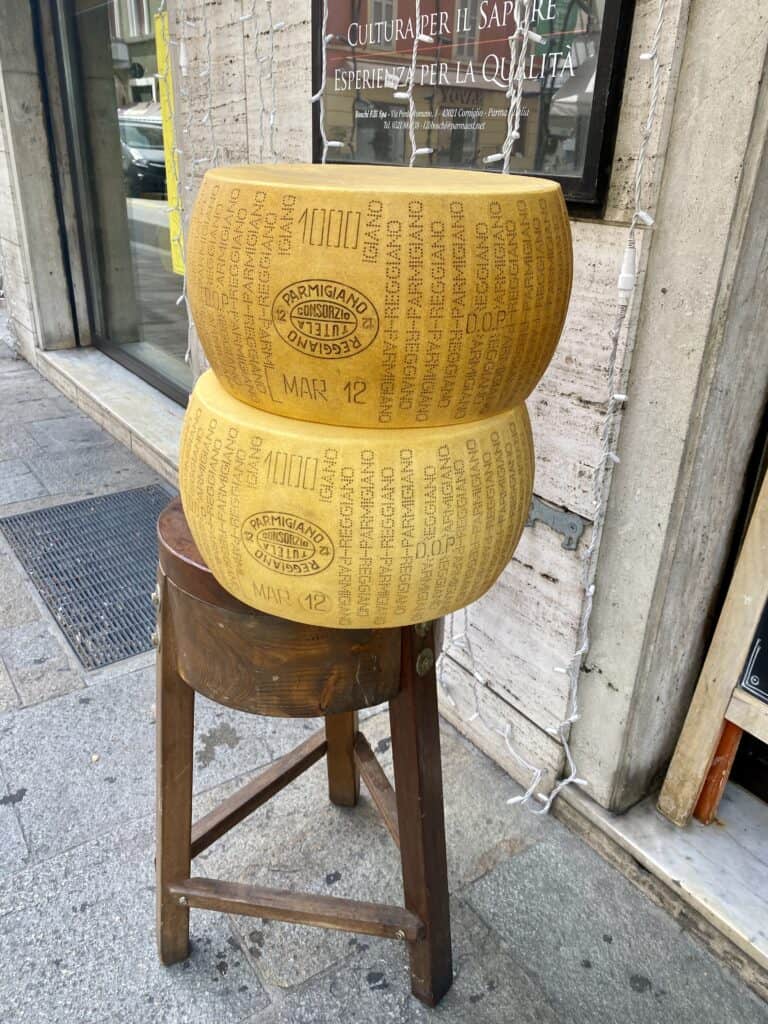
Tagliatelle Bolognese – The city of Bologna is the namesake for the dish, and is the best place to try this scrumptious and deeply traditional fare.
Homemade tagliatelle pasta is mixed with a slow-cooked beef and pork sauce and topped, of course, with some freshly grated, locally produced Parmigiano Reggiano.
Tagliatelle is a long, flat pasta, generally made by hand using a wooden rolling pin on a wooden surface. It is believed the wood causes the pasta to be more porous, causing the heavy meat sauce to cling to it, thus enhancing the dish.
Tortellini in Brodo (tortellini in broth) – Don’t let the plain-looking appearance fool you, this dish is amazing. The kind of thing you eat and then spend the rest of your days longing to eat it again. Tortellini is a tiny, delicate square of egg pasta, filled with pork, prosciutto, Parmigiano Reggiano cheese, and spices.
Historically it was made by the poor, with scraps gathered from the leftovers at the tables of the wealthy. But today it is a special-occasion staple in Emilia-Romagna, and the labor-intensive act of making and stuffing each piece is often a treasured family affair. It is served in a rich, homemade broth.
As the origin story of tortellini goes, Mars and Venus, a Roman god and goddess, were in a pub in what is now Modena, and decided to stay the night. The innkeeper secretly spied on them through the keyhole to their room. He was so inspired by Venus’ beauty that he created a new kind of pasta, modeled on her naval.
Tortellini is so popular in Emilia-Romagna that there is a festival every September in Modena to honor it, and to reenact the (rather creepy) story of the innkeeper and Venus.
Culatello di Zibello – This rare and treasured Italian cured ham is like prosciutto on steroids. The slow aging process dates back to 1735, and the end product is quite expensive.
Culatello is highly regulated and, by European law, can only be produced in Emilia-Romagna, specifically near Parma, due to the fog that envelops the Po River Valley each winter, and gives the meat its unique, complex flavor. For that reason, people in the US have very little experience with this delicacy. Our loss!
Generally served in nearly-translucent slices, it is especially tasty served with aged Parmigiano Reggiano and a glass of vino.
Mortadella, the progenitor of your childhood bologna sandwiches, has about as much in common with Oscar Meyer as the Mona Lisa does with a paint-by-numbers painting. This cured pork sausage is made from premium cuts such as the shoulder and belly and is combined with pistachios, black pepper, myrtle berries, and pork-fat cubes, which help create its signature polka dot appearance.
As one of the very first legally protected foods in the world, mortadella was once a food reserved for the rich and powerful, but is now accessible to all.
Whether on a charcuterie board, in a sandwich (as the late, great Anthony Bourdain loved it), or on a pizza, it is a flavor explosion. Just please don’t call it bologna.
Tigelle – In our opinion, this is by far the tastiest bread in the region. It is a real treat. Prepared with just water, yeast, lard, and flour dough, the small round disks were once baked on terracotta molds in an oven. Today they are made with a tigelliera, a metal press similar to a waffle-iron, that is toasted over the stove. Both the terracotta molds and the tigelliera can be used to imprint a design on both sides of the bread, such as the flowers in the photo on the left, below.
It is often served with charcuterie platters, or sliced in half to make delicious little sandwiches.
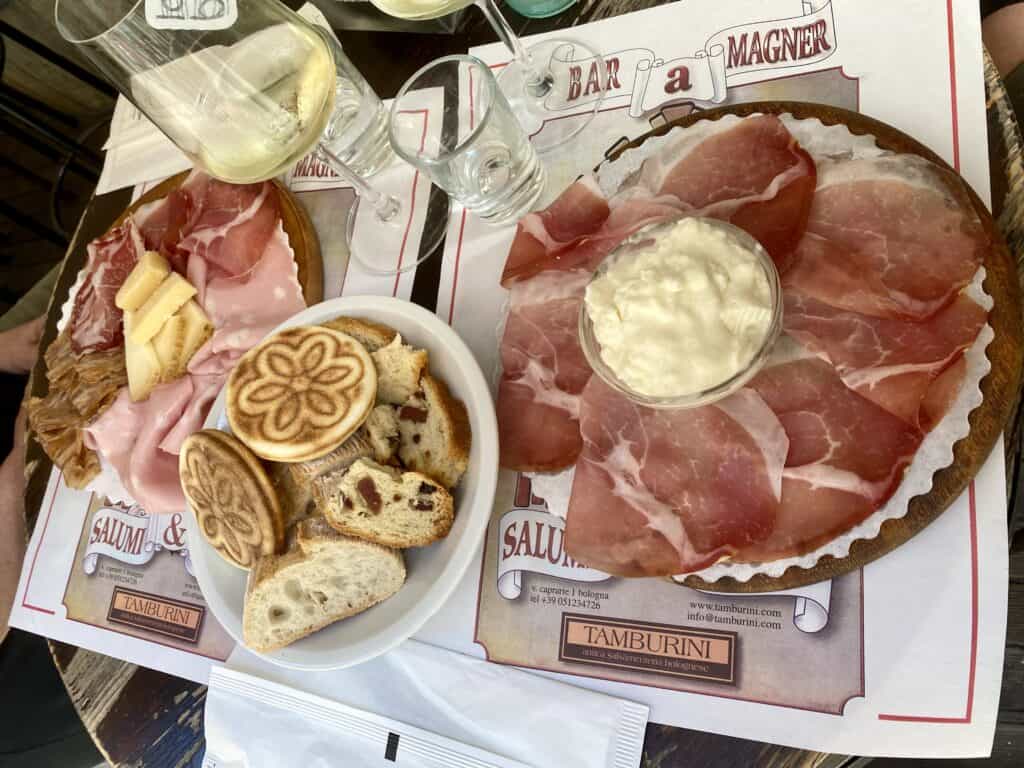
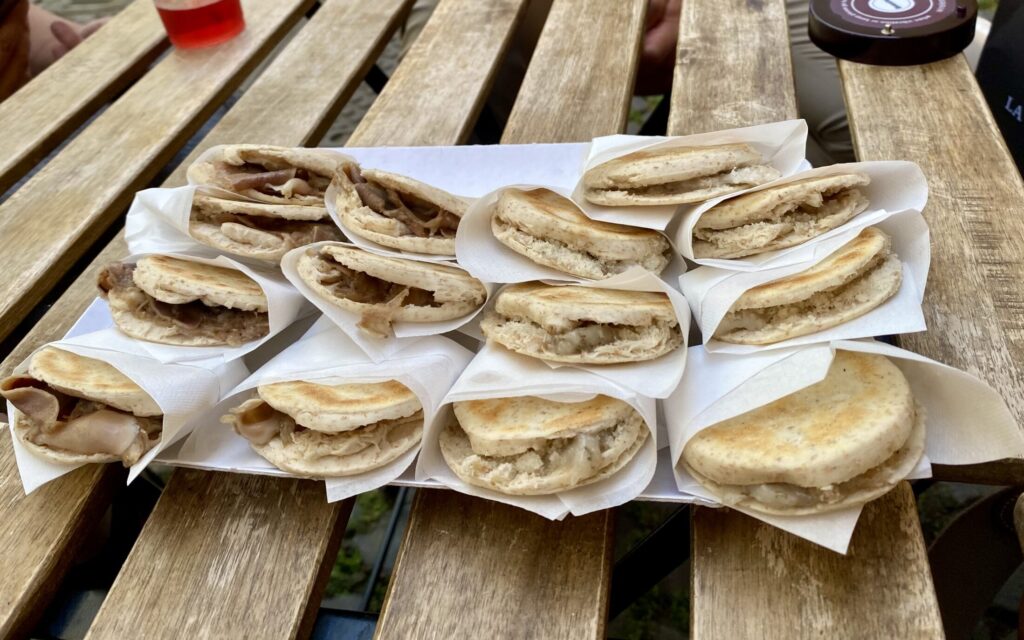
Lambrusco – This inexpensive sparkling red wine is offered nearly everywhere in Emilia Romagna.
In the US, the only Lambrusco we had tasted over the years was sickly-sweet and, for us, not very desirable. (Remember the commercials: “Riunite on ice, that’s nice!”?) But the Lambrusco served in Modena is far less sweet – some of it even quite dry – and is much higher quality.
A chilled glass of Lambrusco on a patio in Emilia-Romagna on a hot summer day, for just a few euros, is fantastico!
Are you interested in the specialties of other regions in Italy? Check out our post – Italy’s Regional Food Specialties
Additional Attractions in Emilia-Romagna
With extra time in the region, there are more cities to explore, just a train ride away from Bologna:
Ferrara – The walled medieval city center is a UNESCO World Heritage Site, and houses multiple palaces along with the moated Este Castle. An extensive bicycling trail runs throughout the city, including along the castle walls.
Ravenna – This city is known for its many basilicas adorned with world-famous mosaics from the 5th and 6th centuries which, together, comprise a UNESCO World Heritage Site.
Rimini – Located on the coast of the Adriatic Sea, Rimini is known for its Roman monuments, 9+ miles of beaches, and all night partying.
If you’re continuing your travels in Italy, be sure to review our other posts: 4 Unforgettable Days in Piedmont & Hiking to the Magnificent Sacra di San Michele
Discover more from Werthwhile Wandering
Subscribe to get the latest posts sent to your email.

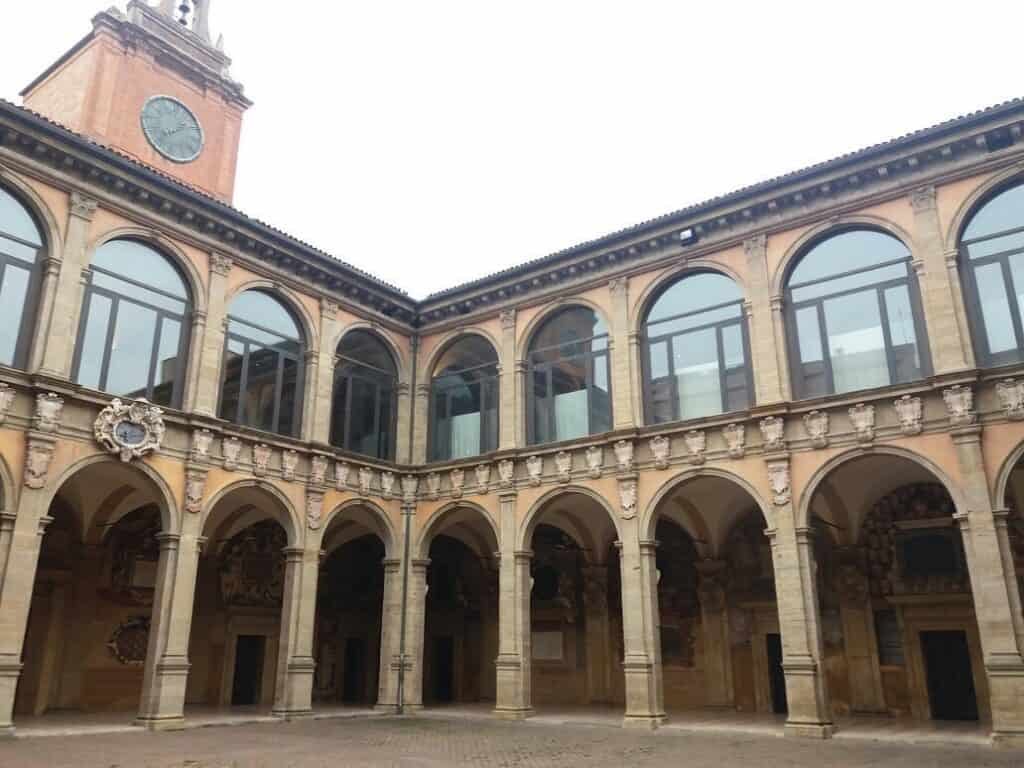
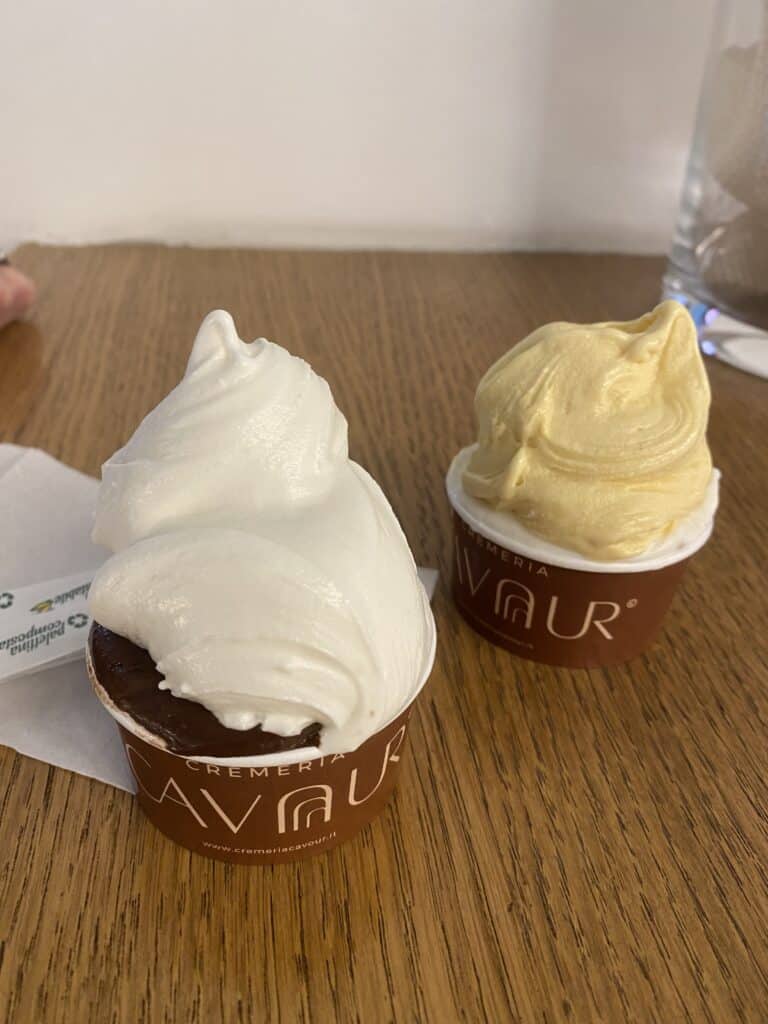
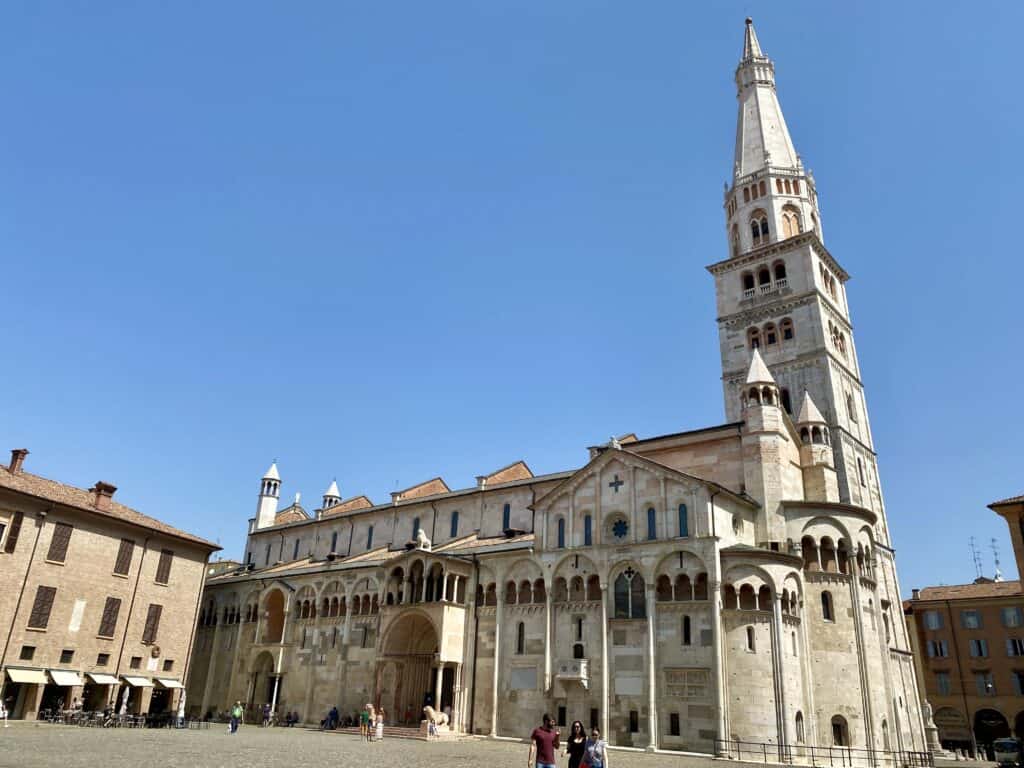
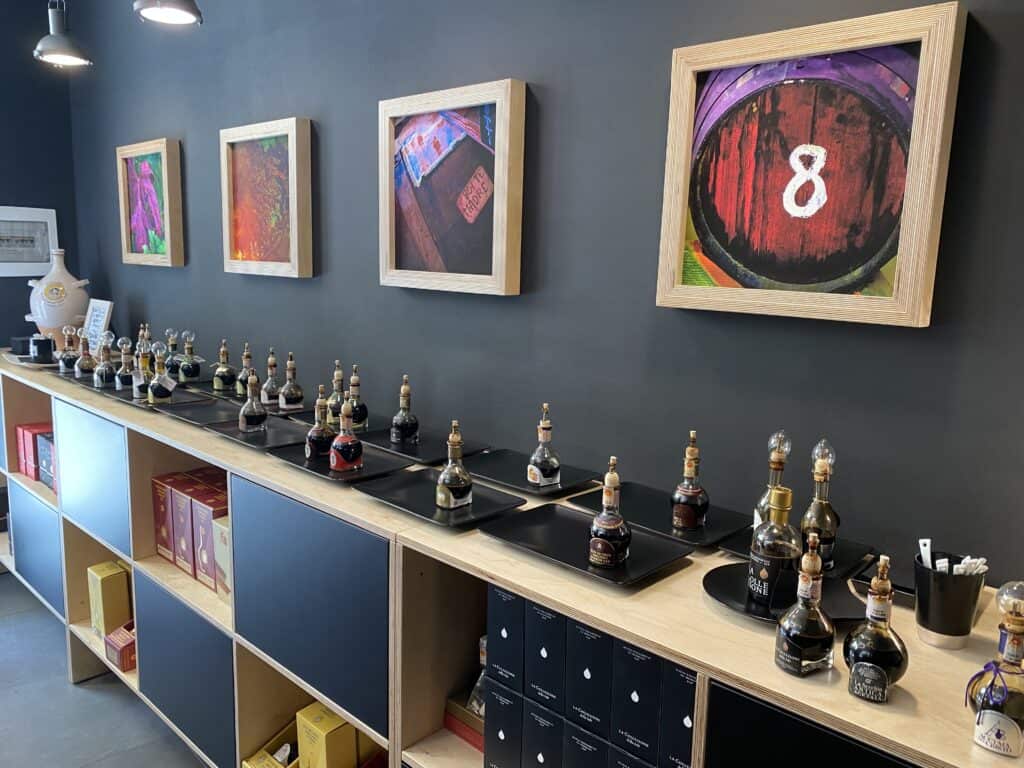
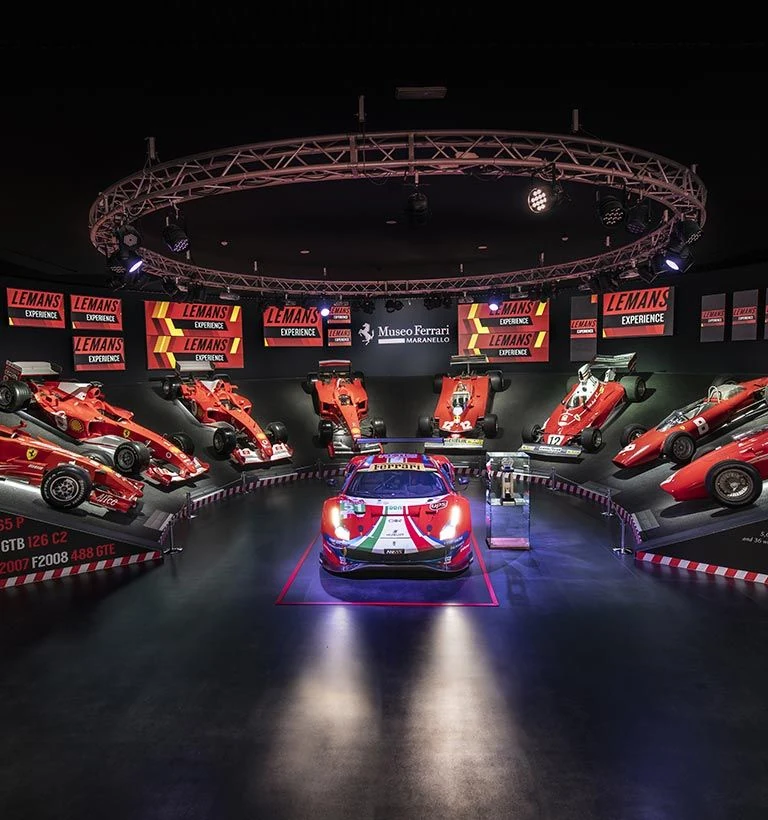
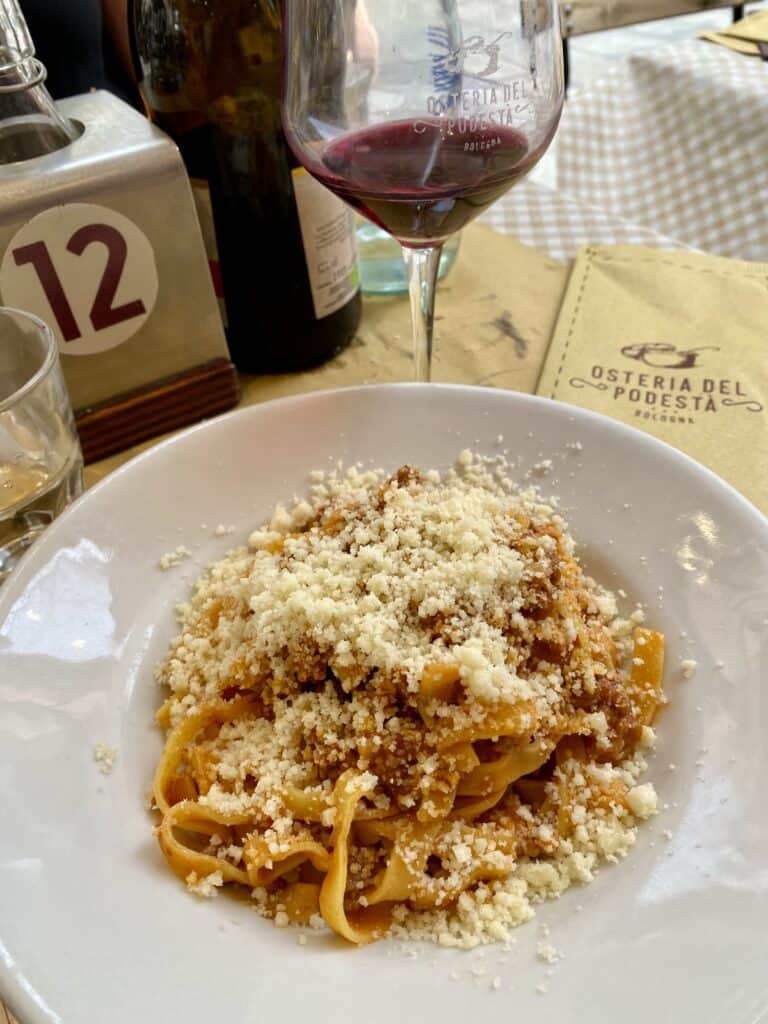
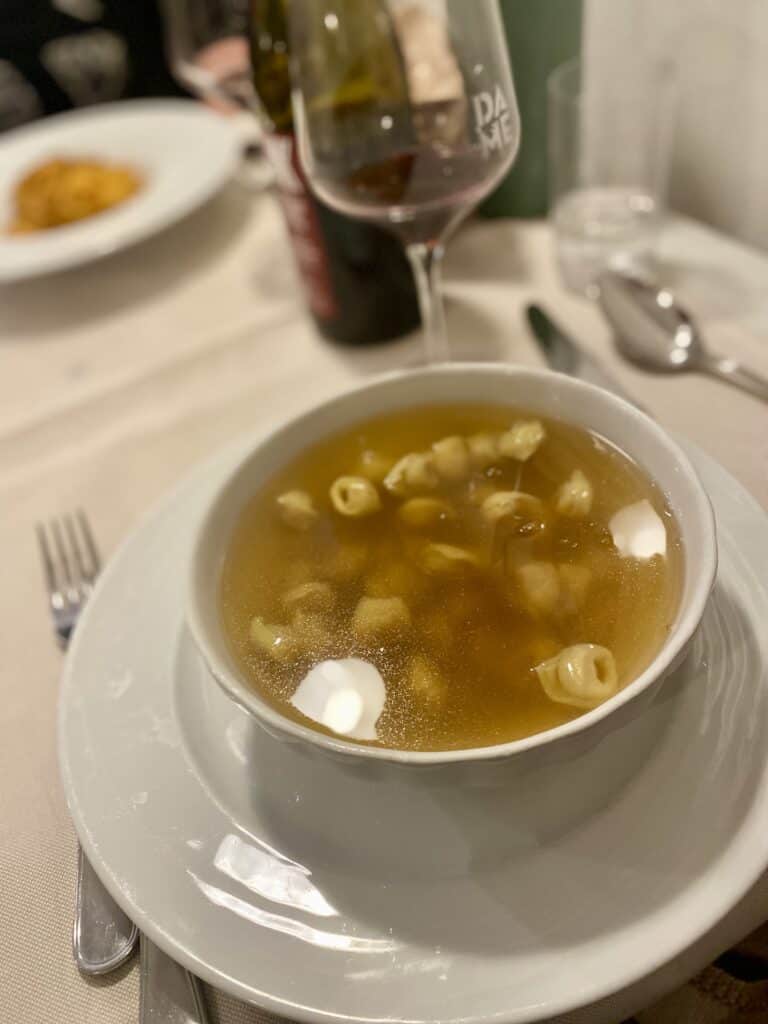
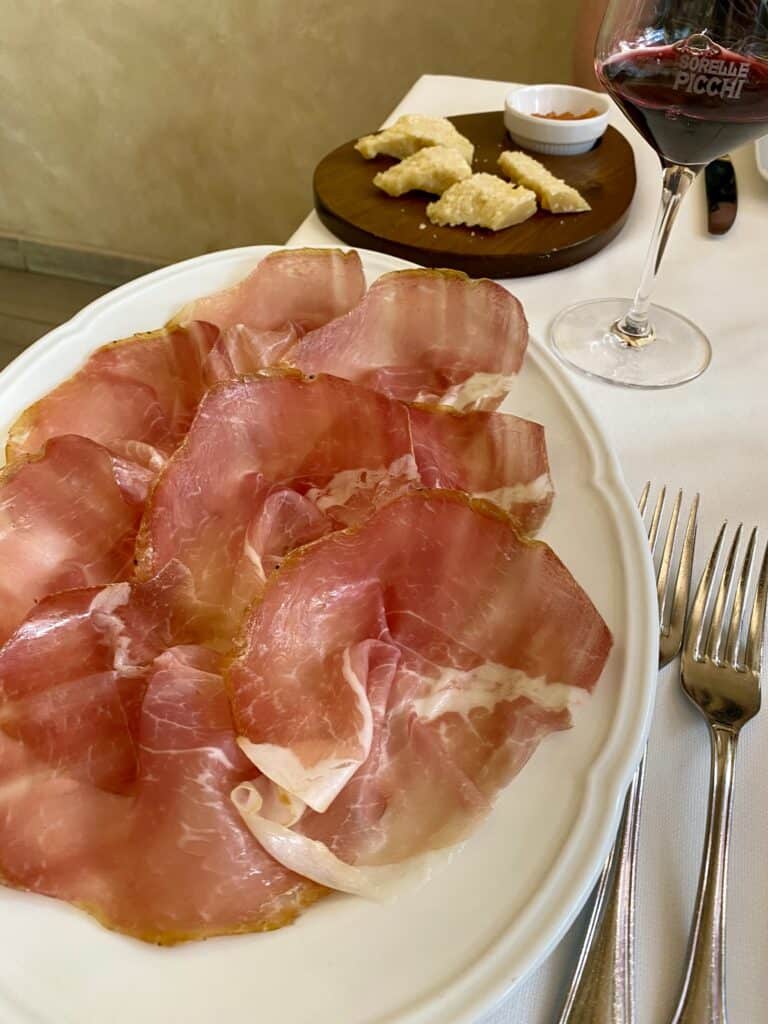

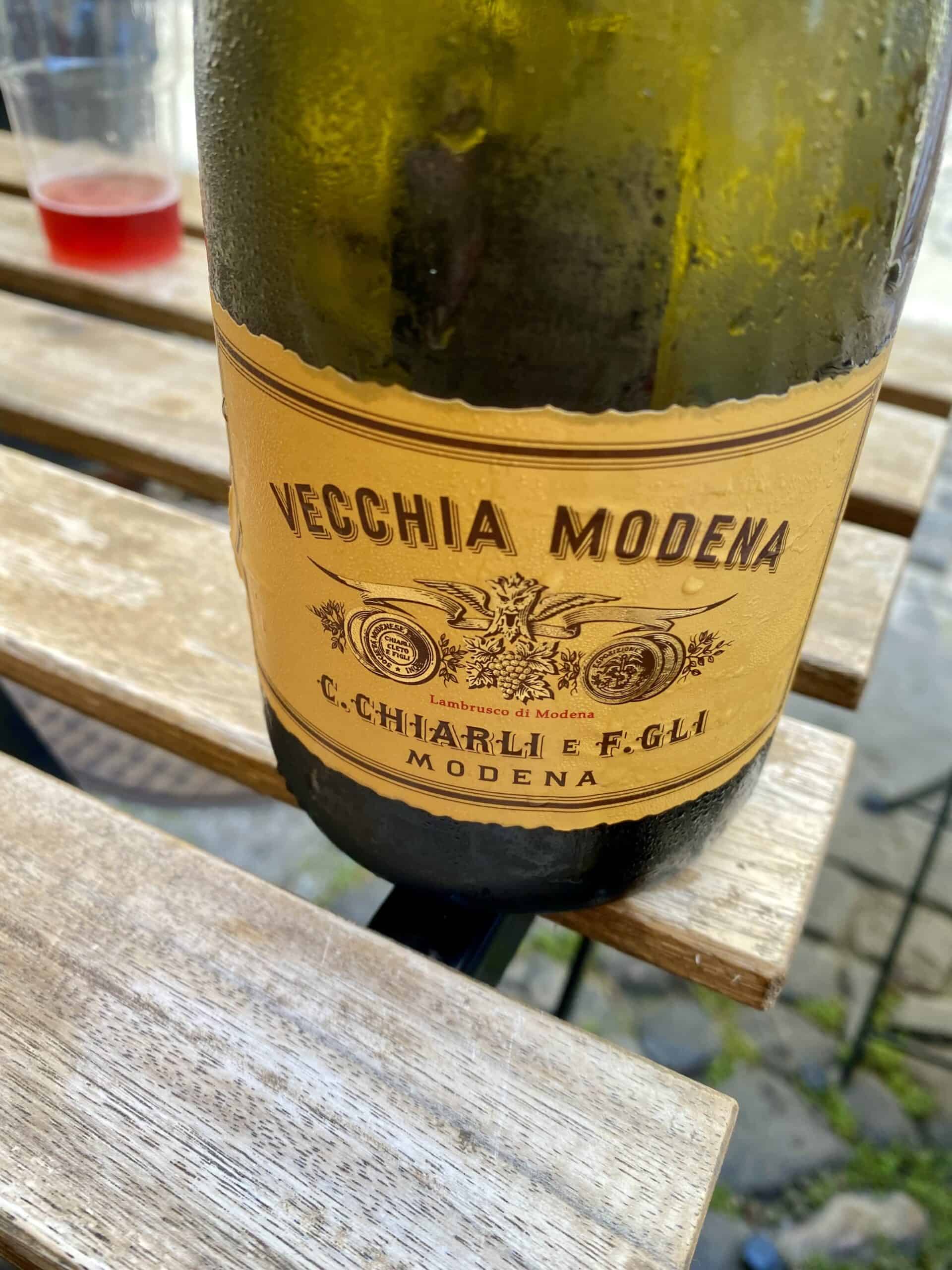




So much beauty to absorb in one reading! And so many places I knew nothing about!! Now I want to spend weeks in this part of Italy, slowly exploring all the places you’ve introduced in this blog.
Thank you, Lucinda! There is so much to see in that region; spending weeks there would be be amazing.